#human form gundams
Explore tagged Tumblr posts
Text
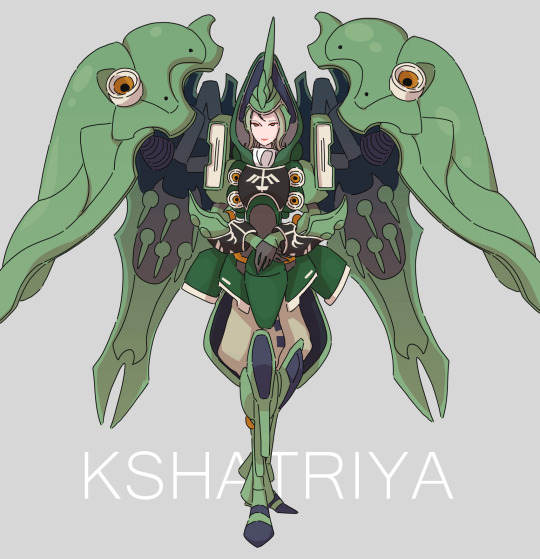
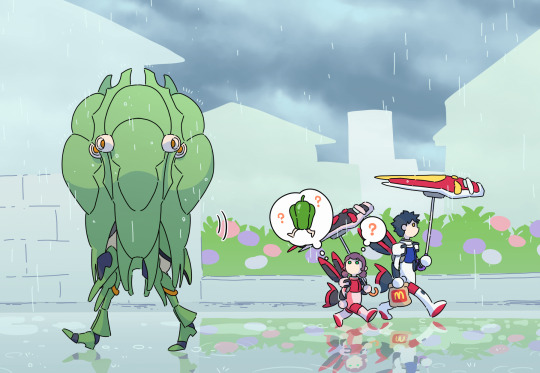
Human Form Kshatriya w/ a special appearance by Strike Freedom and Aile Strike Rouge. - by DTZ1200WG
Source 1 Source 2
#mobile suit gundam#mobile suit gundam unicorn#mobile suit gundam 0096 unicorn#gundam unicorn#nz-666 kshatriya#kshatriya#zgmf-x20a strike freedom gundam#strike freedom gundam#mfg-02+AQM/E-X01 Aile Strike Rouge#Aile Strike Rouge#human form gundams#gundam personifications#gundam art#gundam fanart#gundam
131 notes
·
View notes
Text




sorry for the awkward cropping i was frantically trying to screenshot because this episode was SOOOOOOO FUCKING GOOD and then i was like this could work for one of my muses :) so i have an excuse to share it yippeeee and then i was like i don't even know who. but i don't use twitter much anymore and i have to put this somewhere so i'm just saying this is muse inspo for anyone who wants it. watch 0079 gundam. thanx
#amuro fighting bc its the only thing he's any good at or gets any praise for bc he has no family or real meaningful connections now#vs lalah who fights only for char#and amuro and lalah realize they are the only two ppl like each other in the world and form a connection and then its immediately severed.#making amuro wonder what he's doing or what the point of it all is. Again....smile...#first the gundam was the weapon that allowed for children to be brought into warfare. now its weaponizing humans themselves....#its a matter of time before i put a gundam character on this blog like fr. god#ooc.
4 notes
·
View notes
Text
It's funny to me how Armoured Core 6 spawned like an entire sub-section of Mecha fiction that isn't even based around the game's actual overall content but rather an exaggerated form of some very specific dynamics and ideas that crop up. And like the extent to which this sub-section "really" exists is kinda debatable, being something you only see in like short-form erotic fiction posted on Social Media and Fan-Fiction websites. But it's "real" enough to spawn a whole backlash to it which is also funny because of the stubborn refusal to recognise this fiction as like its own thing
And I'm not saying that this whole sub-section is "good" or that you have to respect it or that it's a thoughtful and compelling reflection of broader Mecha fiction. It's certainly reasonable to dislike this style of Mecha fiction. But you have to at least realise that this sort of thing is it's own style and stop criticising it as just a failed attempt of something more mainstream. Like I'll often see indignant cries of "Do these people even watch Robot shows? How can they call themselves Mecha fans?" and like yeah I'm sure a lot of people who enjoy this form of Erotic Mecha fiction only engage in that specific form of Mecha; which may make them fans of something you don't like but it's stupid to call them "fake fans". And there's also people who do very much engage with and enjoy other works of Mecha fiction but are obviously going to take a very different tone when talking about such erotic Mecha fiction in contrast to Gundam or something. They are very different takes on the same broad idea; interest in one doesn't automatically include interest in the other but that doesn't make them mutually exclusive either
I think an obvious illustrations of this is the whole "Imagine if a Mech Pilot was just a normal guy" post that was going around. To fans of the broader Mecha genre, both Super and Real robot, this comes off as a pretty inane thing to say. It's a common enough idea even among the most well known and successful properties; hardly something you have to "imagine" because most genre fans would have outright seen it. Not to mention the fact that most "proper" mech pilots are just ordinary human soldiers who have been trained for a special job. Like it's not a novel idea in the slightest. But within the specific context of (loosely) Armoured Core 6 inspired erotic Mecha fiction it takes on a whole new meaning. In such fiction your average pilot is some sort of lobotomised cyborg puppygirl, with the simultaneous transhuman and subhuman status of the pilot being a consistently major thematic aspect of the sub-genre. In that context, it would be pretty weird and fucked up for an ordinary guy to be caught in the middle of all that
Which isn't something you need to find interesting or compelling as a Mecha fan. It's perfectly understandable to reject this sub-genre and its ideas as stupid or obnoxious or whatever. But that rejection has to be a conscious act, not a reflexive outburst about how it's different from your preferred form of Mecha fiction. If you're going to criticise this sub-genre of Mecha then the criticisms need to be on its own terms; around what it's actually trying to achieve. You're missing the point entirely if you main criticism of horny mech posts is their failure to understand the themes of Mobile Suit Gundam.
186 notes
·
View notes
Text
There’s something I love about Battletech that I’ve only now figured out how to word, and it’s the way ‘Mechs are treated in the setting (capitalized that way because in universe it’s short for BattleMechs).
If you’re not familiar with this line of thinking, let me introduce it a moment. In short, one of the things that mecha as a genre does is use mechs because they’re human-looking. It lets you take mechanized warfare, something famously cruel and dehumanizing, and humanize it, making it once again about lone heroic actors that tower over the battlefield. That can do a lot of things in a piece: it can let you really understand the emotional impact, war-is-hell style; it can be vaguely propaganda-y/wish fulfillment, in the sense that it defies the idea that one person alone can’t make a difference; it can even be used to make combat a person-to-person backdrop for what’s really going on (you could do a rom-com with mechs pretty neatly I think…wonder if that exists?)
Battletech seems to have this line of thinking built into the setting. From a Doylist perspective, I can’t guarantee it was on purpose, but shut up we’re going off the Watsonian rails.
The setting goes straight into it with the view people have of MechWarriors, the class of soldier that pilots Battlemechs across the battlefields of the Inner Sphere. The setting (especially in older eras) treats these warriors as knights-errant, crusading about in massive suits of armor for whatever cause they believe right--even if that cause is a bit of coin. Chivalric orders at one point really did and occasionally still do within the Battletech universe, and (again, earlier on in the setting) mechs are often passed down through family lines, making these machines into a symbol. What that symbol exactly represents depends from MechWarrior to MechWarrior, but no matter what it means something to them. They have some form of relationship with what it means to be a MechWarrior. To be one of these glorious knights.
But then, as all things must, it all comes crashing down when faced with the horrors of real life and the real-life battlefield. 'Mechs aren't invincible, far from it; they certainly aren't disposable, but in addition to other 'Mechs (the "romantic" opponent all MechWarriors wish to fight) they are under threat from VTOL craft, planes, tanks, artillery, and even properly trained infantry. The glorious knight, striding across the battlefield...can very easily lose their lives to their own notions of splendor. Combat, both in lore and on the tabletop, is brutal, and 'Mechs even if they survive often come away with massive holes, missing limbs, and pilots bloodied and bruised even from the safety of the cockpit. To say nothing of those that don't make it home, their ammunition reserves sending them up in a fireball of death, their reactors purged in superheated steam that could leak into the cockpit and boil them alive, their cockpit itself blasted from off the 'Mech's shoulders and leaving them nothing but a fine red paste. BattleMechs are glorious, yes, but at the end of the day it's still war.
It's still war. And war is hell.
So despite having the appearance of being an empowering machine in-universe, we can actually look at the BattleMech as symbolic of the kind of thing that really happens to people thrown into the grinder of war--they die. And it's not pretty. No idealism can protect you from the barrel of a gun. And you are most certainly cheaper to replace than all your equipment.
The designs of the 'Mechs lean into this depersonalizing angle, too. Many of them are, in the barest sense, humanoid:
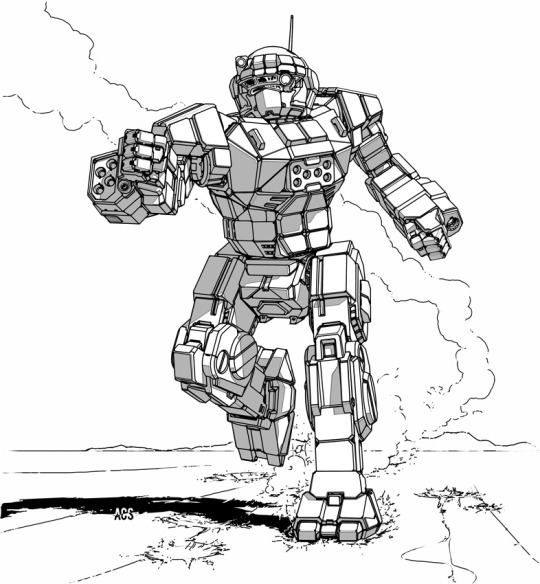
But even then, it's the vision of a human filtered through a much more realistic military-industrial complex than something like, say, Gundam. And on the other end of this spectrum:

...are 'Mechs that look nothing like the people they're supposed to represent.
Looking at this through the lens of 'Mechs as something used to tell a story about humans, we reach a conclusion:
You think this story is about you. It's not. War is hell. Meat is cheap.
And that's actually really cool of Battletech to be so thematically tied into itself like that.
153 notes
·
View notes
Text
One thing I think about sometimes is that there's a dialogue chain in one of Ratio's text messages where he sends us the blueprints for what he explicitly describes as "an anti-planetary weapon design that [he] once devised," which apparently comes with the potential to turn into a full-on gundam???? He says that the necessary materials haven't been developed yet, but that the Guild is working on it and should have results within the next five Amber Eras.


For those who've read his third character story, the phrasing of "anti-planetary weapon" should register as both familiar and odd, especially considering how blasé he is in describing it to the Trailblazer.
My read on the character story is that the creation of the anti-planetary weapon was (whether consciously or not) a compromise to his principles in pursuit of Nous's gaze, and that the IPC's interest in said weapon was his reality check that he didn't want to become the sort of person who pursued knowledge without regard for human life. Even if you don't take that reading, Ratio is more than smart enough to recognize that the IPC can and has used threats like the Antimatter Legion and the Swarm as excuses to develop and unleash weapons with galaxy-scale collateral damage. (See: the Imaginary pulse weapon in this side quest on Penacony.)
When we ask for a weapon for the Express, Ratio tells us that high-caliber armaments are a necessity for traversing the cosmos, which isn't exactly wrong in light of how we deal with Sunday in Penacony, but turning the train into a battering ram is a far cry from turning it into something that could destroy a planet. The fact that the projected timeline is on a scale of Amber Eras suggests to me that he's being at least somewhat facetious about the idea of a collaboration, especially since the whole reason we're having the conversation is that he wanted us to lob thought experiments at him to distract him from work stress. But he does send us a blueprint file, and the terminology of an "anti-planetary weapon" (specifically one he designed in the past, rather than at our request) feels way too specific to be a coincidence.
I have a pet theory that the gundam design is a form of malicious compliance toward the IPC, and the reason the Guild can't even figure out the materials is because he deliberately handed them a nightmare monstrosity of a blueprint and then refused to elaborate.
(The bill of materials casually demands components that break the laws of physics. There are whole pages of math so complicated no one can parse enough of it to conclusively prove that it's bullshit and not just the revolutionary innovations of a man five Amber Eras ahead of his time. The research team sends a terrified intern to ask if the orbital laser cannon really needs to turn into a humanoid assault mech. He shakes his head and tells them that if they truly understood his work then they wouldn't ask such pointless questions.)
#dr ratio#honkai star rail#character analysis#character headcanons#meta#'expect fruitful outcomes within the next five amber eras' he says as he gleefully clogs the ipc's munitions budget#i may not subscribe to worm theory but this man is absolutely a troll that would make aha weep tears of joy#the funding keeps getting approved because everyone is too proud to admit they don't know what the hell they're looking at#and too blinded by hero worship to suggest that maybe the great dr ratio created a stupid-ass weapon design
139 notes
·
View notes
Text
My Headcannons for how Infected and Kasper operate
Buckle up, this is a long post. Thinking about how characters function in relation to the world around them is basically a hobby of mine, so expect more. (I have others planned for both lampert and unpleasant at the very least)
(Not ship related) (angst heavy sorry)
Kasper’s infection is a brain-rooted/cognito-hazardous parasite
He got it after purposely ignoring a chainmail curse, both as a sort of “fuck around and find out” as well as an outright form of self-harm/self-sabotage.
The parasite is the one that primarily controls all the conscious actions of infected, while kasper now acts sub-consciously.
Its less of a split-mind situation and more of a Venom + Eddie or Gundam + Pilot situation they are two separate entities inhabiting the same body that can potentially act at the same time
It just so happens that the parasite from the chainmail curse has VERY similar desires/interests/motivations to Kasper, so the host/parasite relationship actually works very well.
Infected accidentally makes Kasper lose a decent chunk of weight after it takes over, due to it not being able to feel when Kasper is hungry and forgetting to let him eat
Kasper and Infected can be addressed separately (Lampert, UnpleasantGradient, Folly and maybe a few others know this) and Kasper tends to choose not to respond due to his own apathy, instead opting to let Infected take the lead.
Being able to respawn/no permadeath on the regretevator is the reason why Kasper opted to infect himself, as he saw it as the next closest thing to death/suicide.
Allowing infected to enter his mind has radically reduced Kasper’s lifespan. (He’d be lucky if he made it to his late 30’s)
His nose bleeds when Kasper and infected try to act at the same time
Infected is only transferrable via chainmail
Infected doesn’t feel any of the bodily necessities that kasper has, so its not uncommon for him to collapse of exhaustion, dehydration, hunger, ect. If someone doesn’t remind him.
Infected doesnt feel pain either
Kasper feels it though. A lot.
In fact the whole process of infected entering his mind was incredibly painful as is.
Infected isn’t the reason why things in the elevator/on his own body suddenly lose their texture, neither of them know why that happens now.
They personally aren’t physically effected by it and both find it cool, so neither are bothered.
It’s probably just the result of infected’s malware (thats only technically supposed to effect machines) managing to attach itself to a human. Or maybe Kasper could do that and never previously knew. Who knows. ;)
Kasper/infected can phase through objects that are textureless, including parts of his own body. Anything else will collide as it normally would, and take damage.
Infected will always talk with full leetspeak, (L13k D1$) while Kasper will only have one letter/number substitution (L1ke Th1s)
UG unintentionally named infected that. Basically just looked at Kasper, who had just let a parasite into his mind, and looked at the chainmail virus on his computer, and it went “huh… Bro’s Infected”
Bro is, in fact, infected.
#if anyone wants to know#regretevator#regretevator infected#regretevator kasper#infected regretevator#kasper regretevator#also if anyone has thoughts on this lmk i wanna hear them#i am gonna be posting a fic about this btw#two actually#its a confusing dynamic and tbh thats the point#this guy is actually genuinely seriously messed im im so deadass#i might do a more lighthearted sequel to this if you want it#angst#sh trigger#tw sui ideation#tw s3lf harm#tw sui implied#please feel free to yell at me in the tags#and also to tell me any more tw tags to add to this post#that way i can add them#bc tumblr has a stupid amount of tags for what is basically the same thing and its kinda annoying. just pick ine so people can block it.#my personal cannon
71 notes
·
View notes
Text
LGBTQ+ Disabled Characters Showdown Round 2, Wave 3, Poll 7


A character being totally canon LGBTQ+ and disabled was not required to be in this competition. Please check qualifications and propaganda before asking why a character is included.
Check out the other polls in this wave and prior here.
Joly-Les Misérables
Qualifications:
Joly is a hypochondriac and uses a cane. He is in a poly relationship (this isn’t explicitly explicitly canon, but it’s fairly implied in a text from the 1800s)
if i remember correctly he's canonically a cane user (and while canes were often for fashion back then i'm fairly sure he needs his?) and also he's queer by virtue of a) all of les amis being queer and b) whatever's going on between him and bossuet and musichetta
Propaganda:
What’s cooler than an 1800s queer disabled character? Joly (aka Jolllly) is a hypochondriac and uses a cane, and is complimented well by his accident prone boyfriend. The two also have a relationship with them another woman. Despite his constant worrying, Joly is quite happy go lucky and fun, and he is a dedicated member of the revolution and very caring friend.
HE'S A YOUTHFUL MALADE IMAGINAIRE! the day before he's expecting to die (in the june rebellion) he is worried about a cold :( he is also a very happy guy and considering the book is called 'the sad guys' that is commendable
The qualifications and propaganda paragraphs correspond, @satancheeto is the first submitter, @mxcrowave is the second.
Suletta Mercury-Mobile Sit Gundam: The Witch from Mercury
Qualifications:
While this is something which only became a point in the last episode, in the finale of the show, following the big action parts, Suletta was shown to need mobility aids three years afterwards. Also in this timeskip, it is revealed that she has since gotten married to Miorine, who is another woman. Also I'm not autistic or trans but I have seen many people headcanoning her as both.
Canonically disabled by data storm infection, uses crutches on screen. Is married to her wife.
Canonically LGBTQ, as she is shown to love and later marry Miorine Rembran, a girl. Canonically disabled, as in the last episode, the Permet leads her to “lose control of her body” and even in the epilogue 3 years later, she is still using crutches and has not been able to get her body to the way it used to be before.
Suletta Mercury pushed herself to the limits of human survival at the end of the show, but survived. She's disabled and still uses crutches in the 3-year time skip. Her wife loves her and Suletta is still pursuing her dreams of creating a school.
Spoilers probably for the series. She is canonically engaged, later married to a woman, Miorine Rembran, and at the end of the series is shown to be physically disabled, with her both speaking on her physical therapy and her crutches being in several shots. Also she is written in a way that can be read as neurodivergent.
Partially paralyzed
Propaganda:
I love this character so much and I need everybody to as well. First of all, to get the biggest notes out of the way to establish why she qualifies (with major spoilers for episode 24), Suletta, after a three years timeskip, is shown to need crutches to get around a lot of the time. This fact is ultimately treated as an accomplishment on her part (/is never treated as a bad thing, just because I like clarifying this when it comes to any form of rep), since it took her some time to get to the point where she could move around at all. Also in this timeskip, the girl Suletta has been engaged to throughout most of the series, Miorine, has since become her wife, shown largely by the two of them having matching rings and Suletta's relatives being referred to as Miorine's in-laws. This makes Suletta the very first sapphic protagonist in Gundam. I've also seen headcanons or her such as her being autistic or transfem get popular. Getting to what makes me love her, Suletta, early on, is very easily intimidated in a lot of regards, largely because this is her first time actually being around anybody her age, but she's always been trying her best! She generally tries very hard to be positive and cares about those around her very much but can easily question her worth and is sometimes deterred. She is very willing to stand up and fight (usually in a literal way because she has won many mobile suit duels) when it most matters, a trait which remained consistent throughout the series, whether it's in regards to her role as a rescue piolet in the Cradle Planet short story, the drive which ultimately caused her to win the duel which initially got her engaged to Miorine in her first in-series appearance or the finale of the whole show. Suletta is somebody who has gone through a lot of hurt (especially in the series. Eps 17 and 18 put this girl through the wringer), and ultimately wasn't really raised to have too much autonomy. But despite everything, she keeps going. She's a very strong person who cares about those around her and I love her for it.
She is just the most joyful person ever who loves her wife.
Above, and: Vote for the newlyweds!
Everything above applies here. Suletta is shown to still not fully able to walk well without her crutches in the shot we get of her walking in the finale, her crutches are explicitly shown in several shots, and she openly talks about how her physical therapy is going to her, now wife, Miorine. On the topic of her and Miorine, they were engaged as of episode 1 with an iconic line from Miorine of "I guess Mercury is rather conservative. That sort of thing is commonplace here." in response to Suletta responding that she was a woman as a rebuttal about being Miorine's fiancée. Lots happens, and it's not uncommon to see either one of them yearning for each other, with a genuinely well written romance that leads to a happy ending with them explicitly married.
In the final battle of the series, Suletta highly exerts herself piloting a dangerous Gundam and significantly damages her body to save her family and fiancée. It's described that she was left mostly paralyzed from the neurological overload. Three years later, she still has significant scarring and needs to use crutches as a mobility aid, and talks about how her dexterity is "recovering." This means she was also disabled during her wedding with her wife, and they're shown with matching wedding bands as they discuss her health.
Anything Else?:
There's a whole lot more in terms of their relationship, and i've basically given a seriously lightened, budget sparksnotes version of it. Also, Suletta became disabled from a crazy battle for the finale, where she unleashed a giant rainbow data storm with a rainbow glowing Gundam. (Submitter 4)
The qualifications and propaganda paragraphs correspond, @insertbrowsinghere is the first submitter.
#polls#poll#disability#disabled characters#lgbtq#lgbtq characters#id in alt text#lgbtq dcs round 2#lgbtq dcs r2 wave 3#joly#les mis#les mierables#suletta mercury#mobile suit gundam the witch from mercury#mobile suit gundam
49 notes
·
View notes
Text
Republic of Zeon declared independence. Principality of Zeon is formed. Zeon declared war on Earth Federation. Zeon deployed G3 Gas on civilians. Zeon used nuclear weapon. Earth Federation devastated. Zeon pressed on the attack on Earth. Earth Federation developed Gundam. Gundam turn the tide of the war.
And you wonder why the Gundam is ruthless. "The white devil." "The cold blooded killer at the controls." As if people forget of Zeon's war crimes on civilians. The Gundam kill combatants in the show, not civilians. You don't expect Gundam to show mercy on combatants do you? Zeon's LeSean said it himself, "The battlefield is no place to debate mercy." Look at what happen to the Gundam in the end when he showed mercy.
As much as I appreciate the show trying to convey the "there are good and bad people on both sides", Zeon had it coming.
The only tragedy is the "good ones" in Zeon have to die for their masters grand ambition to subjugate Earth.
It's like you try to sympathize with NAZI Germany and Imperial Japan for their soldiers dying in combat when they killed many civilians.
Seems like trying to humanize the villains are becoming a new trend in Hollywood now while making the heroes the villains.
#gundam requiem for vengeance#mobile suit gundam#gundam#principality of zeon#earth federation#anime#spoilers
29 notes
·
View notes
Note
Hi, are you still working on the AFO Retcon Essay? You mentioned a few times you are not sure if Horikoshi retconned AFO's original plan or if he always intended for AFO to take over Tomura, but made AFO act somewhat contradictory from the start regardless. Did this ever make you feel like there are too many possibilities in regards to Horikoshi's original intentions to take into account and could therefore make it harder to write the essay?
Hi there, and thanks for your interest! I did actually talk about this a good while back, towards the beginning of the year; you can find that post here. It says pretty much exactly what you did and goes a bit further--that I'm so distrustful of Horikoshi as a writer that I have no idea anymore what might have been retconned and what was his intention from the start, and further, that even if something was his intention from the start, I don't trust him to have laid the groundwork for those intentions with honesty or good faith.
Instead of the AFO Retcon Essay, what I've been poking at instead is some sort of massive retrospective of all the problems with BNHA's endgame. That's going to require a reread on my part, and some decisions about formatting--namely, do I want to do the reread privately, on my end, and then write the Mega Chonky Essay and post it when I'm finished, or do I do it publically, read-along liveblog style, documenting the problems as I go?
At the moment, I'm leaning towards the second. I have some tentative ideas about keeping a running list of (to use a witticism from the Twitter fen) Themes & Such, ideas and ideology the series sets out and how well it lives up to those ideas--or how it fails to. I'd also like to keep track of things like character arcs and foreshadowing, documenting things with an eye to where those arcs go, what the foreshadowing amounts to, whether the series keeps its implicit promises, and so on. I suspect it would wind up looking something like a cross between the heteromorphobia essay and my chapter thoughts posts.
On the other hand, a format that deals with one group of problems at a time could feel more focused, discussing all the evidence at once of any particular topic rather than having to keep many (many) plates spinning across a retrospective of the entire series. I also already have the broad outline for that, since it was my plan last time I was seriously poking at the idea. It would probably still end up being posted in multiple parts; the parts would just cover different groups of characters or aspects of the series per installment, rather than e.g. each installment covering an arc and everything in it.
I suppose there's nothing stopping me from doing first the former and then the latter? I'm planning to reread the whole series anyway, after all.
In any case, I like that kind of installment-based format not least because I'm also in the early stages of getting a Patreon set up aimed at supporting my meatier chunks of fandom writing and potentially giving people some ability to point me at this or that topic. A multi-part analysis of BNHA--something in a similar style as my documentations of heteromorphobia, the problems with the anime's adaptation of My Villain Academia, or even, to reach back to an older fandom, my episode-by-episode write-ups on Human Debris in Gundam IBO!--strikes me as a good way to get that off the ground.
I've got one or two things to finish getting off my plate before then, and I'd want to wait until the last volume of BNHA officially comes out (12/4) just in case of any thirteenth-hour surprises, but keep an eye out! I'm not inclined to paywall my writing, but maybe an early access sort of model? I'm also going to want to find a blogging site that's more aimed at hosting long-form writing than Tumblr is. We'll see!
In the meantime, to give everyone an example of the kinds of things I'm looking at tracking through the story, one of the things that most vexes me about the ending is how it not only fails to resolve its contradictory ideas of saving and heroism, it feels to even recognize those contradictions. Here's a chunk of my notes on that topic from the outline of The Mega Chonky Essay in its current form.
• Nana says saving isn’t just saving someone’s life, but also making sure they’re smiling in the end. But that means that saving their life is the prerequisite. If Eri died smiling, her smiling would not prevent everyone from recognizing her death as a tragedy. • “Perfect Victory” is defined as both “winning” and “saving” flawlessly—that is, every fight is won, and no one is left unsaved. This is introduced first as an ideal for Deku and Bakugou to strive for, with both of them needing to work on different parts of the equation, and continues to be an aspect of Bakugou’s characterization, as it comes up again in Joint Training. But it doesn’t stay locked to them, as All Might says directly to the American pilots that they can’t be allowed to die because the kids are aiming for a Perfect Victory. • A pivotal question for Toga and the larger series is, given that Heroes are supposed to save people, how do Heroes justify killing Villains? Do they not think of Villains as people? With all three of these ideas in place, the challenge becomes how to navigate the endgame to a place where all three concepts are honored/resolved. The ending must demonstrate that Heroes do see Villains as people while also being able to achieve their desired Perfect Victory—they must win against the Villains while also saving them, where “saving” means that the Villains’ lives are saved and they’re smiling in the end. Or must they? After the first war, the series introduces another concept of how to save people, albeit one that runs directly counter to Nana's definition of a saved person as someone both alive and smiling: Gran Torino says that killing someone can be a way of saving them. He and Nana can’t both be right, so to confront and resolve that discrepancy, the story will have to acknowledge one of them as wrong. (Spoilers: It does not.) In the end, Toga dies, and Deku kills Shigaraki, and if both of them die smiling, well, you sure as hell can’t say the same for e.g. Gigantomachia or All For One or Dabi or any of the thousands of unhappy Villains who wound up in prison (many of them likely bound for the gallows!), alive but decidedly not smiling. Heck, All Might, in trying to console Deku, moves the goalposts even more by suggesting that all Deku needed to do to get the credit on “saving” Shigaraki was make sure his inner child wasn’t crying anymore. Not only does he not have to live, he doesn’t even have to be smiling! An absence of obvious grief is enough! Thus, you wind up in this place where you have an unsolvable problem: somewhere along the line, either someone failed or someone was wrong, and the story, in being unwilling to confront that disharmony, winds up undermining other established themes and goals. Did the kids “lose” because they failed to meet the criteria for the Perfect Victory? Was the definition of “saving” wrong? Was Gran Torino wrong or was Nana? Was the definition of Perfect Victory wrong? Was Toga correct in her fear that Heroes don’t see Villains as people? No matter what the answer is, it runs afoul of some previously established Theme in the story. Even if the idea is that the ending is downbeat and bittersweet because the kids failed (and the story is using All Might’s goalpost-moving to resolve the dissonant definitions of “saving” in Gran Torino’s favor), that still means yet another theme is violated: that of BNHA being a story of how Deku+his classmates become “the greatest Heroes.” After all, the story also defined “greatest Heroes” for us! The greatest Heroes are those who can achieve Perfect Victory.
Whatever form this essay winds up taking, these are the sorts of concepts I want to discuss in terms of how the series sets them up compared to how it winds up following them through.
Thanks for the ask!
18 notes
·
View notes
Text
IBO reference notes on . . . the lie of Agnika Kaieru
This is a post about McGillis Fareed.
Originally presented as an antagonist ala the Gundam franchise's 'Char clone' archetype (named after Char Aznable, an expy of the Red Baron by way of the Last of the Romanovs), McGillis turns out to be one of Iron-Blooded Orphans' key protagonists, his initial appearances reframed by an eventual alliance with Martian mercenary group Tekkadan, home to the more obvious lead characters. In large part, it is his story we watch unfold, as he attempts to secure control over Gjallarhorn, the repressive extra-national military in which he serves.
And it's hard to discuss that story without reference to Agnika Kaieru, the man credited with founding Gjallarhorn to counter AI-controlled 'mobile armours' three hundred years earlier. The apocalyptic conflict between humanity and the armours known as the Calamity War is the source of the current social order, not to mention the titular Gundam mecha. Agnika is responsible for leading Gjallarhorn to victory, an achievement for which McGillis idolises him. He is also a non-character, haunting events solely through McGillis' commentary, at once vitally important and entirely absent.
I thought it would be interesting to examine how that works. I ended up writing 7000 words about it. Spoilers for everything and content warnings for mentions of child sexual abuse.
The character who wasn't there
If we take McGillis at his word, his personal philosophy was defined by reading a biography of Gjallarhorn's founder at a young age. More specifically, at a young age, while being sexually abused by his adoptive father, Iznario Fareed, who had extricated him from working at a brothel, a situation he was previously forced into after being abducted while homeless on the streets. The Life of Agnika Kaieru was a light in this darkness, offering a path out of a situation that, though seemingly improved from his original impoverishment, continued to be highly coercive and harmful. McGillis was made heir to a powerful family, yet had to sneak out of his patron's bed in the middle of the night, naked, with visible bruises across his body. He was desperately in need of hope.
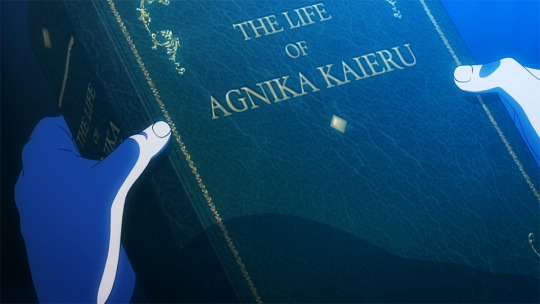
The abuse appears to have been baked into this plot-beat from the start, with hints to it provided at multiple points during Season 1. Iznario being accompanied by a blonde boy and blonde young man (echoing the excesses of Carta Issue, a character who surrounds herself with McGillis lookalikes owing to an unrequited crush), McGillis' reluctance to spend the night at the Fareed estate, and the questions of legitimacy surrounding his inheritance all take on darker significance when the truth is revealed in Season 2. We may safely assume he was always planned to be reacting to this form of exploitation.
I suspect Agnika was a later creation. Comparing the outline of the Calamity War provided at the very start of the show to the ways it later becomes relevant suggests a considerable amount of fleshing-out in the interim. There are few outright contradictions, or at least, few we cannot explained by assuming in-fiction ignorance. Nevertheless, the importance of Agnika as a historical figure, the myths surrounding his mobile suit, and the very existence of the mobile armours each enter without previous set-up. This is inelegant, in the manner of much of IBO's exposition: workmanlike additions to propel the plot along, extending exactly as far as required and no more. But we cannot discount their importance to the final result and since McGillis aspires, in a very real sense, to become his hero, it is instructive to consider what the show tells us about Agnika.
Immediately we run into the fact we know nothing at all about him as a person. The only 'canonical' description of his personality was provided by the series' director, who compared him to 'the hero in a shonen manga': a charismatic character who always saves his friends. Apart from reinforcing my belief any spin-off set during the Calamity War would be more typical fare than Iron-Blooded Orphans turned out to be, this tells us little. Within the story as it plays out, Agnika is blank space. Being three hundred years dead, it does not actually matter what he was like – itself a statement about how people can be forgotten even when their names reverberate through history. Indeed, the thematic parallel to the fates of a large chunk of the cast is a potent one. Time has rendered Agnika a cipher, subject to the judgement of distant strangers, his exact morals and intentions long-since stripped away.
What remains are his legacy and beliefs. That we must speak of these separately is telling. The Seven Stars, descendants of Agnika's fellow Gundam pilots and Gjallarhorn's present-day leadership, show little deference to the man who commanded their ancestors. There are no statues memorialising him and though Gundam Bael has its attendant ghost stories, of Agnika's spirit living on inside and how it will only awake for his true inheritor, it is shuttered away, a monument nobody ever goes to see. One gets the strong impression McGillis is the only person to pay him more than lips service in centuries.
Consequently, McGillis' personal interpretation of Agnika's philosophy is the only window we get on his beliefs, and the most thorough explanation of that interpretation is given to his eleven-year-old child-bride, Almiria Bauduin.
Fairy tales told by a pied piper
From what we see on screen, McGillis is never overtly abusive towards Almiria, to whom he becomes engaged as part of a political scheme. He is pushed into the arrangement by Iznario and in the side-story covering its commencement, he goes out of his way to provide Almiria with the choice he lacks – something that spurs Almiria to form a genuine attachment to him. However, the engagement also serves his personal ambitions extremely well and he unquestionably manipulates her over the course of it (hard to think of another term to describe comforting her on the loss of her brother Gaelio, for which McGillis is himself responsible). We could and probably should label his apparent concern for her emotional wellbeing and indulgence of her desire to be seen as a grown-up as an attempt at grooming her, not in the sexual sense, but to make her a more amenable chess-piece. On the other hand, McGillis prevents Almiria from killing herself when the truth comes out, at the cost of an injury that severely disadvantages him in battle shortly thereafter – a notable action when her political utility has just evaporated. On the other other hand, this incident prompts him to describe her, quite disdainfully, as 'troublesome'.
What I'm saying is, the question of whether McGillis sees Almiria as a tool or somebody he truly cares for is thorny, as it is for virtually every single character with whom he has a meaningful relationship. Nevertheless, I think we are meant to believe he is being honest when he talks to Almiria about The Life of Agnika Kaieru. What he says fits his actions elsewhere and there are no on-screen indications he isn't being truthful – at least from his perspective – when he credits Agnika's principles with 'saving him'.
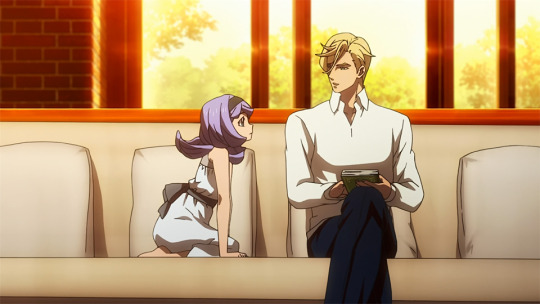
McGillis states Agnika wanted a world where “humans could live as humans”; that is, where humans of all backgrounds could compete fairly to achieve their dreams. To a child of low-birth, abused behind closed doors, this is an enticing prospect. McGillis goes on to entice Almiria in turn with the promise of 'loving whomever you wish' and of neither of them being mocked for the age imbalance between them. He concludes the scene by saying it is time to “pry open the door to that world with my own two hands.”
A few episodes later, in an internal monologue, he refers to Agnika as the “greatest symbol of power the world had ever seen. Authority, vigour, might, capability, vitality, influence, as well as brute force.” Inspired by this man's life story, he is determined to usurp rule over Gjallarhorn and finally address the want of power that had defined his own life since birth.
Like everything to do with Agnika, what this tells us about his principles is somewhat vague. Quite literally the child-friendly version (sort of; McGillis openly tells Almiria he contemplated suicide prior to reading the book and is likely a poor judge of age-appropriateness). Still, the philosophy described combines individualism with egalitarianism. The stated goal is a level playing field, free of artificial advantages like wealth or social status, where everyone can pursue their dreams as far as they are each able. This is implied to be a natural state for humanity, such that achieving it would be a form of reclamation. Further, the kinds of power McGillis lists are personal – physical strength, intelligence, charisma – and he works obsessively to cultivate them. We don't get confirmation that self-improvement is another of Agnika's ideals, but it would fit from what is presented.
If you are anything like me, your brain will have turned to all sorts of weird capitalism fans and their buzzwords for justifying frantic competition between people at every level of society. Phrases like 'personal responsibility', 'rugged individualism', and 'rational self-interest', possibly with a side-helping of – gods help us – libertarianism. You may also be asking, if this is what Gjallarhorn's founder espoused, how did it end up enforcing disparities between different populations, oppressing workers and maintaining social hierarchies, at large and within its own walls?
To which I might reply, have you looked at what all those weird capitalism fans get up to, recently? This is an unsatisfying answer, though, and to properly examine how Agnika's legacy intersects with the dreaded c-word, we need to take a couple of side-steps, starting with why it should be a natural connection to make within the context of this show.
A digression into narratives about capitalism
Iron-Blooded Orphans is one of the few entries in the franchise to directly engage with capitalism as a major source of global problems. That probably sounds a little strange if you're aware of the the reputation Gundam has as a whole, so let me explain.
[Also, let me remind everyone the definition of capitalism is “an economic system based on the private ownership of the means of production and their operation for profit.” (Wikipedia; emphasis mine). It's worth being exact.]
When the concept of space colonies is introduced in 1979's Mobile Suit Gundam, they are framed as a response to global overpopulation and the consequent ecological decline of the Earth (pause to appreciate the massive fuck-off dog-whistle; we'll come back to that in a second). The war the show depicts is presented as a matter of sovereignty, whereby those offloaded into orbit rise up against rule by an indifferent terrestrial government. The colonies themselves are cities built within artificially landscaped environments inside O'Neil cylinders. They do not appear to serve any commercial purpose in and of themselves; when we see labour happening in space, it is in service to the colonies, rather than something they are for (the Zeon miners in sequel series ZZ; there is also the fuel-collecting Jupiter Fleet but they are a very odd entity and not fleshed out).
Contrast this to IBO where Mars' utility as a source of 'half-metal' is of paramount importance to its political and economic position, and the space colonies are explicitly shown to be factory complexes, company towns, resorts, and prisons. The middle arc of Season 1 is focused on a workers' revolt against the corporation running a particular group of colonies, the Dorts, while the impetus behind spin-off game Urdr Hunt is the lead character's desire to transform his home's fortunes by making it a popular tourist destination. There are also mentions of 'resource satellites' and glimpses of what appear to be colonies built to mine asteroids. And true, it isn't stated whether all the colonies originate as extractive operations and production centres. But those purposes are depicted the reason they are maintained to the present day, removing such dirty businesses far above the 'precious', 'unsullied' Earth (cue 'The Lightship', played with maximum irony).
[Side-note: the Dort Company runs its colonies as a 'public enterprise on behalf of the African Union', implying state ownership. However there are multiple references to 'rich factory owners from Earth', suggesting private control. Best I can figure, the colonies are state-owned while the production facilities inside them belong to private companies? Since everyone appears to work for Dort (every worker we see wears the same green jacket), I'm not certain how that functions. Perhaps the workforce is leased to private factories via the Company? That would be fittingly grim.]
Now to be clear, I am not claiming Gundam as a whole doesn't tackle problems caused or exacerbated by capitalism. The introduction of Anaheim Electronics into the original Gundam timeline marks clear interest in exploring the influence of corporate entities on warfare. We may also – from the outside – interrogate overpopulation concerns as deflecting blame from capital's destructive activities, going hand-in-hand with racism over migration, and obfuscating who exactly gets sent to 'colonise the unknown' (spoilers: it's the poor and vulnerable). I'm unconvinced the original run from Mobile Suit Gundam to Char's Counterattack is intended as commentary in this manner; equally, I don't think it's hard to get there (as Gundam Unicorn somewhat demonstrates).
What I'm trying to articulate is a distinction between 'being about a problem' and 'naming capitalism as the cause'. Most Gundam series tend to depict capital as part of an amorphous blob of 'Earth-sphere corruption' or 'greedy elites'. Even Anaheim acts as a third party in the Earth/space conflict, taking advantage of the war rather than shaping the fault-lines along which it occurs. Additionally, actual money very rarely tends to be a factor in the plot. Groups like Celestial Being from Gundam 00 appear to possess near-infinite budget; Gundam Wing's itinerant teenage terrorists have only erratic and arbitrary issues obtaining supplies (where are you getting the damn ammo, Trowa?!); and even in The Witch From Mercury, where you'd really expect expenditure to matter, it… doesn't. G-Witch toys with access to funds and the requirement to be profitable early on, but overall is more a courtly drama in business drag, unconcerned with why corporations work the way they do. Issues such as the exploitation of vulnerable populations for the sake of driving down costs are gestured to without becoming strictly plot-relevant.
Meanwhile over in IBO, the poverty of the Martian characters is an ever-present threat and come the denouement, whether they have any money left is of paramount importance. The show tells us bullets have a price-tag, using this to drive actions inside a world run for the sake of profit. It is mentioned that productivity in the African Union's colonies is expected to drop following the Dort labourers wining better working conditions, a boon to the competing economic blocs that leads to one of them sheltering Tekkadan in gratitude for helping bring this change about. The reason co-main character Orga Itsuka does not survive episode 48 is because arms-dealer Nobliss Gordon thinks it will be financially advantageous to have him killed. That fellow businessman McMurdo Barriston extends limited aid to Tekkadan after publicly cutting them loose for the sake of the Teiwaz conglomerate's reputation and revenue is highly relevant to his characterisation. And Teiwaz itself is run like a mafia, a riff on yakuza practices that erases the line between big business and organised crime – a hell of claim to make in a story where another of the leads' entire goal is uplifting Mars by playing the economic system.
Now, in my reading the major theme running through Iron-Blooded Orphans is exploitation. An acute depiction of how capitalist societies operate – the amorality of the profit motive, the colonial underpinnings, the sheer, monstrous cost – is a subset of this. I don't feel it's any surprise that an attempt to realistically depict child soldiers and other exploited groups should lead to a detailed rendering of the gears in which the world is currently caught. Equally, I don't think it fair to reduce IBO to being about capitalism, full-stop. Patriarchy, slavery and repressive class structures all have older roots and there is an argument to be made that where it touches those things, the show cares less about them as artefacts of modern economic arrangements than as evils in their own right.
It still manages to say stuff about the functioning of capitalism with more bluntness than most pieces of fiction I've encountered and, speaking as an Englishman, the thing that strikes me most is the decision to make the lynchpin of its world an aristocratically-led military force.
A further digression into aristocratic fables
Aristocracy means 'government by a hereditary elite'. It is sustained via wealth passed down through generations of a small group of families and was one of the key mechanisms by which the feudal system operated, prior to the slow capitalist revolution of the 16th to 18th Centuries. It is often treated as obsolete, having been superseded by more modern forms of 'being rich'. Certainly it seems quaint in these days of tech billionaires and oligarchs to talk of descendents of feudal lords who prize family trees traced back to William the Conqueror.
What you have to understand about the United Kingdom of Great Britain and Northern Ireland (official name used with illustrative intent) is that this country never properly rid itself of its aristocracy. We are a monarchy. Our parliament includes a House of Lords. And while these are both vestiges of earlier systems, they are neither of them ceremonial. The Lords and the Crown possess actual power that can affect decisions made by the House of Commons, our democratically-elected governing body. The Lords (who are not elected and include those appointed for life alongside ninety-two hereditary positions [this was a compromise]) can review and send back certain types of bills passed in the Commons, delaying their introduction into law. Meanwhile the Crown technically still holds an absolute veto at the end of the legislative process, which only by convention do they not use (royal assent is required for any bill to become law; apparently the last time it was withheld was 1708, but the threat remains and the Crown continues to interfere in proposals affecting their interests).
As you might expect, there have been murmurings for years about replacing the Lords with elected officials and we all like to pretend the King just exists for show. Regardless, these institutions – hundreds of years old and holdovers from a completely different social and economic order – persist because the aristocracy remains a useful tool of the modern British state. The Royal Family can be said to be its advertising wing, not in the sense of attracting tourism but of going around shoring up foreign relations, to help keep Britain the fifth richest country in the world. These diplomatic efforts are a key reason why they are worth the maintenance costs (and the noxious scandals). However it goes deeper than that.
Kings and queens don't make sense without the idea of hereditary superiority, and even with its overt political power reduced by changing times, the British aristocracy continues to shape our upper classes. We have an entire parallel school system preparing the children of the wealthy for life running the country. Our public schools (fee-paying schools open to all who can afford them; we call the free ones 'state schools') have been educating the sons of the 'best families' for centuries. They were the source of the officers and administrators who maintained the British Empire and they continue to be where a massive proportion of our diplomats, politicians, journalists, civil servants, and military leadership receive their education.
This system, funnelling kids through schools like Eaton and Harrow to Oxford and Cambridge Universities, is a factory for class solidarity. It allows students to network and, just as importantly, instils in them the signifiers of being 'the proper kind of person'. Ways of speaking. Ways of dressing. An awareness of who they should defer to and who they can look down on, so that they can be recognised by other alumni as 'correct'. Trustworthy. Reliable.
Above all, it reinforces the notion they have both a right and a responsibility to lead.
Because that's the heart of the lie nobility tells: 'there is something about us that means we must rule over them.' If Britain no longer entirely subscribes to this quality being inborn, it can at least be taught to those of the right stock, bringing them a little closer to the true aristocracy. They can elevate themselves above the plebs, as diligent servants of the Crown, who remains the untouchable pinnacle of quality. [Translation note: 'the Crown' refers to both the reigning monarch and the state. They are functionally the same thing. That's what being a monarchy means.]
Thus, the Empire was able to send its younger, weirder sons out to plunder far-off lands, and produced many an honourable sort to lead thousands against machine guns in Europe, and, in a post-imperial age, Britain can still present an impeccably polite face to the world, to negotiate better deals. Diminished as it is, the aristocracy's shambling husk continues on, manufacturing not the capitalists per se (although the successors to the original land-lords are hardly above enriching themselves and plenty of our lifetime peers are people who've run successful businesses), but the supporting apparatus for capitalist operations. The grease on the wheels and a permanent roadblock along the road to meaningful social change.
You literally cannot have equality if there's a guy at the top who gets a stupid hat and ungodly amounts of influence just for who his parents were.
The wrong story, at the right time
It isn't hard to imagine about how it happened.
Gjallarhorn is the only significant military force left standing after a quarter of a solar-system-spanning human race has been exterminated. Faced with the task of reconstructing civilisation, it splits the world into four blocs for easier administration, abolishing the old national borders. At those blocs' request, it then applies the same reorganisation to Mars and Jupiter, the better to funnel resources towards restoring the Earth. Throughout, it maintains the position of a neutral arbiter; Gjallarhorn was formed to stop the War; now it must ensure there will never be another.
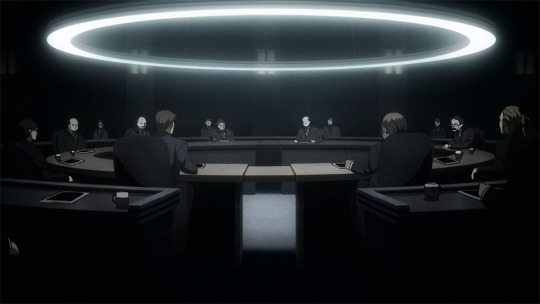
To this end, the tools that allowed it to triumph – the Alaya-Vijnana augmentation technology and the Gundam frames that meant flesh and blood could out-compete tireless machinery – are buried. Victory is instead attributed to the resilience of pure, unadulterated humanity. The pilots slew the monsters not thanks to their equipment but their innate ability. The greatest among them are heralded as champions and natural leaders.
It is a small step to decreeing that their children will inherit their positions. Innate qualities can be passed down and heirs, raised in the image of their parents. Maybe this is an extension of those traditions from which sprang duellists bearing red flags. Maybe it is merely a result of the new-born legends. What matters is, Gjallarhorn endures, guided by its seven stars.
Over the following centuries, the system embeds. The ethos of human purity takes hold, measured by distance from the homeworld. Unfortunates born to space or on distant, dusty worlds posses utility for digging up half-metal or labouring in orbital factories but have no place inside Earth's atmosphere. They would make the place untidy, now the scars of the War are scrubbed away. Those who seek to upset this situation are dissuaded. Those subjected to augmentation, dismissed as subhuman. The peace is kept.
Sadly, new generations of the ennobled families lack the moral fibre of their forebears, accepting bribes, pushing the boundaries of Gjallarhorn's neutrality. There are rules and those tasked with enforcing the rules and yet still the rot spreads. These younger generations lack the moral fibre of their vaunted forebears. A sad decline.
Or perhaps that is bullshit and they are exactly the same: people come into power, who will justify anything for the sake of never giving it up and ensuring that all things flow towards the centre.

Gjallarhorn is the armed wing of the Earth super-state, operating for the benefit of the whole despite competition between the individual blocs. That is to say, it is the army of a capitalist state writ large, in the usual manner of sci-fi magnifying things across time and space. Broadly, a state's purpose under capitalism is to facilitate the smooth running of private enterprise by maintaining infrastructure, providing a workforce, and destroying anything that gets in the way of expansion. Tradition, upper-class solidarity and ideological frameworks all help hold the arrangement together. It is useful, after all, to train people to believe they're supporting a grand cause when they are in fact facilitating exploitation and theft for the benefit of someone else.
And it is here we must turn our attention back to The Life of Agnika Kaieru. Above, I glibly compared the things McGillis says Agnika stood for to capitalistic propaganda. What I mean is that it reads as the ideology surrounding free-market capitalism, where companies are released from all restraint and allowed to compete irrespective of consequence. This is often said to fuel innovation and create a healthy market that will – somehow – benefit everyone, despite observably driving owners to increase profits at the expense of large numbers of people, including their customers.
In that context, claiming you want to ensure everyone competes 'fairly' is disingenuous, since it entails the removal of both limitations and safety nets. No artificial advantages and reliance solely on personal strengths means those who are old, disabled, or otherwise lacking Agnika's stated virtues will automatically be left behind. This is not hypothetical; I see it around me everyday, as a result of policies predicated on exactly this basis, just as we see it represented in IBO by a wide-scale absence of social support and characters too vulnerable to survive a free-for-all (Atra, Builth, the Turbines, in flashback). But the ideological statement elides such problems.
Given the title of the biography, I assume it dates from after Agnika died. Any impression derived from it must therefore be suspected of being what Gjallarhorn required him to have believed. Historically, both aristocracy and capitalism alike have benefited from this kind of distortion, so it would be no great surprise if the book turned out to be more PR than honest report. While Agnika's principles are incompatible with the hereditary advantages enjoyed by the Seven Stars, there are ways to read them as being aligned with the wider social and economic arrangements. As such, it is entirely plausible the way he is remembered was designed to support those arrangements.
The right story, at the wrong time
The rhetoric of McGillis' attempted coup centres Gjallarhorn's failure to adhere to its original values, citing unwarranted attacks against civilians and inference in Earth politics. The Seven Stars must be replaced with sincere believers to correct a drift away from what Agnika intended. McGillis outright proclaims his 'revolutionaries' have the truth of Gjallarhorn on their side.
Even if this is a calculated stance designed to rile younger officers into being the army he requires, McGillis' internal monologues reveal a commitment to the ideal of the individual seizing their dreams through sheer personal strength. He seeks not only to prove this is possible, but also to inspire those who cower because “they don't know how to use their fangs” into following his example. From what we see, he has taken Agnika's words – as they were relayed to him – as gospel.
Is his interpretation correct? And if it is, was it what Agnika believed, or simply what it was useful for him to say? McGillis is manipulative, spinning tales to make others do what he wants. Was his idol the same, pre-empting biographical distortions by espousing a finely-tuned message that would reassure the masses while he built a system geared toward curtailing the power of all but a few?
Trick question. There's no answer in the text. As I said, Agnika isn't a character; what he really intended is irrelevant and therefore not present. Yet a distinction must be drawn between what is said publicly and what is said behind the scenes. This is a layering IBO captures via Rustal Elion, McGillis' rival for control of Gjallarhorn, who out-manoeuvres and defeats him. Rustal is a pragmatist unencumbered by quasi-mystic belief in Agnika or some 'true purpose' to Gjallarhorn. He does whatever it takes to best McGillis, casually breaking centuries-old weaponry restrictions and even provoking a fresh war to undermine his opponent's plans – all while presenting as a bastion of lawful rule. Privately, he admits to being 'shady', willing to deal with whomsoever furthers his goals (e.g. Nobliss Gordon, who starts violent uprisings to spur sales of his merchandise). It is this capacity for realpolitik that means Rustal comes out on top.
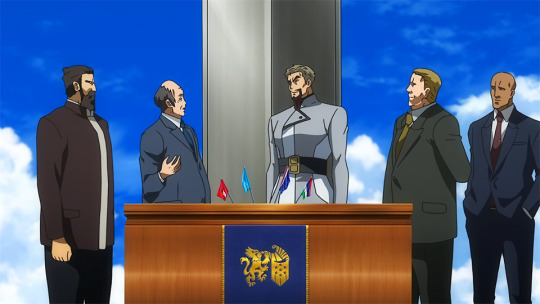
The narrative does gesture at motivations beyond self-interest. When Rustal reforms Gjallarhorn in the wake of the Seven Stars decimation at McGillis' hand, he abolishes the aristocratic council (of which he is also a member) and replaces it with a more democratic form of governance. That he is immediately elected to the role of supreme commander gives us some reason to doubt his sincerity. Offsetting this, he is also shown to be working towards the abolishment of slavery in his society.
Regardless of his exact degree of progressiveness, however, Rustal appears entirely uninterested in changing what Gjallarhorn is for. See, institutions and social structures have specific purposes, which need not be the ones they claim, via statements or appearances. A capitalist business may claim to exist to provide a product or service, but its actual purpose is the generation of profit. The police may claim to be an institution of citizen protection, but their purpose is the enforcement of the law, which can be detrimental to some or all of those selfsame citizens.
Gjallarhorn's purpose is to control the colonial holdings of the Earth and maintain the current division of the world. They administrate the extraction of resources, quash attempts at social change, and crush resistance to exploitative business practices. Moreover, Rustal is certainly well-aware this is what his job entails. It is his fleet that carries out a calculated massacre of the Dort workers' unions when they push for better conditions and he personally orders an orbital strike on defeated child-soldiers as an exercise in image management. His reforms thus smack more than a little of an army or a weapons manufacturer improving its hiring policies: sure, they now employ women and members of minority groups; they still exist to kill people.
For these kinds of entities, purpose is all-important. You can dress them up however you want, so long as their function continues to be carried out. I bet, when I described my country's persisting aristocratic elements, you immediately went, “that sounds like [mechanics of regional upper class and attendant justifications for social division].” Yes. Precisely. We don't have feudal system holdovers at the centre of our society because they're the most efficient or only means of fulfilling those roles. They're simply the ones that make the most sense at this point in our history. A different environment would necessitate a different form, but the function would remain.
[I am glossing over the mutability of function here – the power of the king has reduced greatly via political and economic shifts, so he's no longer performing quite the same role as his ancestors – but hopefully you get what I mean.]
Rustal's reforms are an illustration of purpose superseding form. At the end of the show, the narration informs us trust in Gjallarhorn has been restored, indicating an end to meaningful opposition to what we have seen it do. Similarly, when Rustal states that the organisation's history matters more than its mythology, he is saying it has largely been operating correctly and should continue to do so in the future. The public claims can be altered, the set-dressing reworked. The function remains.
Poor delusions
Like the British state and its equivalents, Gjallarhorn is draped in heroic, mythological imagery. From uniforms to equipment naming conventions, it presents as grand and noble, even possessing heraldry, as if originating in a gathering of brave knights. We, the audience, know that this is a veneer plastered atop the material reality. Scenes of its foundation are comparatively mundane: sober men wearing drab suits, shaping the future with the stroke of a pen. The dress-up played since is pure embellishment.
McGillis, however, takes the imagery seriously.

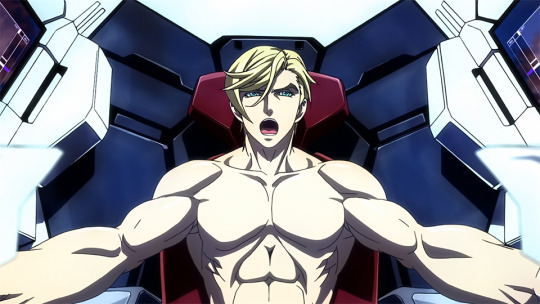
His plan hinges on 'awakening' Gundam Bael and being 'accepted' as its new pilot, fulfilling an old rule/tradition whereby whoever possesses this particular mobile suit is the undisputed leader of Gjallarhorn. By taking a disgraced Iznario's place among the Seven Stars, augmenting himself with an Alaya-Vijnana system, and capturing the facility containing Bael, McGillis intends to anoint himself the new Agnika. At a stroke, he believes he will gain the loyalty of all Gjallarhorn forces on Earth and thus the military strength necessary to defeat Rustal's Moon-based Arianrhod Fleet.
For reasons I'll detail another time, I don't think his strategy is necessarily ridiculous. But it doesn't work. The other Seven Stars do not automatically bow down to Bael's new pilot, instead adopting a neutral position awaiting the outcome of the impending battle, and there is no mass uprising among the ranks below them. Since Rustal otherwise commands an overwhelming number of troops, this turns the conclusion into a foregone one. The few who do join McGillis' cause are annihilated and he is forced to retreat, eventually dying in a one-man attack on the Arianrhod flagship.
It must be stressed that McGillis isn't stupid. He is a canny political operator who correctly identifies the biggest obstacles to success, and while his analysis of Gjallarhorn's corruption is deployed principally as a rhetorical tool, he's not wrong. The leadership are complicit in a lot of extremely shady activity, including experimentation with Alaya-Vijnana technology, contravening the taboo against augmentation their ancestors propagated. They do act against their publicly-stated values, to the detriment of ordinary people and in the interests of those who benefit from a hideously exploitative system.
His mistake is to treat this as a bug, rather than the feature we might more correctly diagnose it to be. Within The Life of Agnika Kaieru, McGillis believes he has discovered the hidden truth about Gjallarhorn. He imagines by setting Agnika aside, the Seven Stars obfuscated mechanisms to curtail their authority and an ethos more welcoming to people like him. (There is a lot we could discuss about the ways McGillis is immunised against some forms of bigotry by his station, despite his illegitimate status, and how he exploits more disadvantaged soldiers like Ein Dalton and Isurugi Camice for his own ends. It's just, that'd be another two thousand words and I really need to wrap this up.)
Yet if we follow Rustal's advice and heed history, the timeline shown in Season 1 has Gjallarhorn dolling out sections of Mars to the blocs a mere three years after the Calamity War ended. Among the many things we don't know about Agnika is if he survived the War, but whether he did or not, his organisation pretty instantly became a tool of social division and exploitation. The most we may allow is that its original purpose was truly noble. Its actions once the apocalypse had been averted speak for themselves.
This has been long walk, I suppose, for the fairly succinct summary of McGillis as a character who rejects private truth in favour of embracing a public, propagandising lie. I am compelled by the idea even so. Capitalism is far from the only system to have claimed universal virtue while benefitting merely a select few, but it has gone uniquely hard on the idea 'you can make it too'. Given IBO's uncluttered depictions of a world run for profit (with the complicity of ostensibly non-capitalistic institutions), taking a cynical read on Agnika's supposed ideology is trivial. Human triumphalism and Gjallarhorn conceptualised as the arbiter of fair competition dovetail into the show's unjust present in a manner too neat to discount. More than anything else, the choice McGillis makes is a common one in real life.
Sometimes, that's a positive thing, pushing people to insist on making promises come true to the detriment of the swindler proffering them. Others, it is a source of profound disorientation, leading in very dark directions as blame for the dissonance is attributed to anything but the root cause.
[This seems is as good a juncture as any to remark that McGillis is not a proponent of anything we can easily label fascistic. He focuses on individual freedom irrespective of national identity; he is attacking people genuinely perpetuating his world's ills; and he definitely doesn't bother courting a disaffected public by playing to middle-class anxieties. He doesn't need to. His plan is to enact a coup from high up inside a military hierarchy, while promising to lessen the force exerted against society. Though there are links to be traced between his ideology and fascist rhetoric, it isn't the avenue his circumstances compel him to go down.]
[I am 100% certain he would've gone in that direction if they had, but that's a counterfactual, not what the show actually presents.]
How McGillis got to where he did is another of IBO's many examples of adaptations to extremis that look utterly bonkers when seen at a remove. An outsider, thrust into the realm of a vicious upper class, he accurately declared the whole thing a nest of lies and hypocrisy. He could never buy the pretences it sold, to others and to itself. His very existence was damning disproof. Then, at his lowest ebb, he found a story about what it should be and that – that he bought, hook, line and sinker.
Already primed to consider power the be-all and end-all of life, he took Agnika's story as a guide to gaining the upper-hand, going so far as to tell Rustal (then a young adult) that the only thing he now desired was Bael. Though it seems he lapsed into a wait-and-see approach between prepubescence and his mid-twenties, witnessing children from Mars fighting using Gundams makes him believe destiny is taking a hand in events and the time has come to act. He betrays Carta and Gaelio, his two closest friends, both heirs to other Seven Star families, for the sake of clearing his path forwards. These were the first people to treat him like a normal child and he admits with his dying breath that he reciprocated their affection. This was part of why he killed/attempted to kill them: in their company, he started losing the will to pursue his dream, put off guard by finally having something positive in his life. So he chose to violently reject them, unable to give up on what he'd started.
That could easily be McGillis' epitaph. He is characterised by an overwhelming commitment to seeing through his power-grab, even if it means fighting an entire fleet to go personally kill Rustal. This is very far from a sane response and we might say likewise about everything he does prior. From his gleeful divinations at the sight of ancient relics, to his rapturous exultation on activating a machine he knows just required the appropriate brain/computer interface, the personality lurking beneath his habitually polite mask is little short of unhinged.

Which is of a piece with a group of teenage orphans clinging tight to the idea a good life lies just beyond the next battle, having internalised that proving their strength is the only way to survive. McGillis has to think taking on Agnika's mantle will bring him what he wishes, because otherwise his actions have been for nought, nothing can be changed, and the misery he endured is inescapable. It's the same self-reinforcing spiral, turned up to eleven.
(Re)imagining the world
In the final outcome, Iron-Blooded Orphans refutes McGillis' individualism, albeit not without caveat. Destabilising the Seven Stars creates space for incremental change and self-interestedly assisting independence activists lays the groundwork for Mars' eventual freedom from Earth. McGillis does create a “storm in this stagnant world,” with lasting consequences regardless of how swiftly it subsides. Nonetheless, his death is a futile one compared to the other causalities during the finale, who all manage to make their last acts count for something. Where Tekkadan share a mutually-supporting community – they are a 'pack of wolves' – he stands alone and saves nothing of what mattered to him.
As I said above, I don't want to treat IBO as a story solely and absolutely about capitalism. In a similar vein, I'm not trying to position an interpretation of Agnika as a vector for capitalist propaganda as the intended one. There are multiple moving parts here, spinning out from that serious consideration of child-soldiers as more than just a trope in fiction aimed at teenagers. My read on those parts is contextualised by my cultural background (I do now want to look into how Japan's own aristocracy mutated with their forced induction into global capitalism).
At the same time, McGillis indisputably misapprehends how a structure within a capitalist environment works because he wants to believe a version of what says about itself. And The Life of Agnika Kaieru is an artefact of that environment. Even without knowing more about its authorship, publication or veracity, and setting aside what McGillis brings to the table (his desire for power was set years before he'd heard of Agnika), the fact he finds it in Iznario's library speaks volumes. Biographies are not neutral objects. As alluded to above, the act of public remembrance shapes culture and hence society. I think it both reasonable and interesting to look at McGillis' arc with the assumption the book is ultimately commensurate with everything he was reacting against.
What would have happened had McGillis won is another moot question when the narrative hinges specifically on his failure. But a land of competition, overseen by the supreme authority of Gjallarhorn, where the only moral law derives from the dreams of the strong?
Perhaps the most damning thing to be said of McGillis' principles – of Agnika's principles – is that they would produce a world functionally identical to the one we started with.
———
Postscript:
For the sake of absolute clarity, I do not believe whether a story is about capitalism or not has any bearing on its quality. My discussion of the other Gundam shows is intended purely to highlight what I see as a fundamental difference between what they are doing and what IBO is. I don't think it is a problem that G-Witch is a personal/courtly drama, or that Wing is focused on fighting in a more philosophical than material sense, or that the franchise has overall tended towards addressing conflict per se, without any serious interrogation from an economic angle.
Stories can only fail at what they attempt, not at what they don't.
I nevertheless stand by what I said. A piece of fiction concerned merely with some generalised notion of 'human greed' is not about capitalism in any meaningful sense, and I fear that's where most Gundam shows land, one way or another, when they touch on corporate interests.
[Index of other writing]
#gundam iron blooded orphans#gundam ibo#g tekketsu#tekketsu no orphans#gundam#mcgillis fareed#agnika kaieru#gjallarhorn#capitalism#reference#notes
47 notes
·
View notes
Text
The Witch From Mercury: Tying Up Loose Ends
A look at the state of different characters, organizations and plot points after the epilogue of The Witch From Mercury.

Earth vs. Space, and Earthian Inequality
The crux of this conflict was the growing inequality between Earthians and Spacians, and that Spacians were exploiting Earthian labour and resources for their gain, while also pitting them in proxy wars. When Miorine dissolved the Benerit Group, all their assets were placed into Earthian hands, including all the resources the plundered from Earth and presumably a number of weapons. With this, the main driving force of the conflict is resolved, although tensions very likely still linger, especially among those who lost family and friends to the Benerit Group.
While it may not be a perfect long-term solution, it has definitely helped in the short-term. Gund-Arm Inc. has survived the transfer and we see Miorine working with Earthian protesters to solve lingering issues. And we even see that Sedo is now getting an education. Clearly, Miorine’s actions havehad a positive affect on Earthian lives. Suletta & Miorine changed the status quo in a far greater way for the better than many Gundam main characters manage to do in their own worlds.
The Benerit Group
The Benerit Group was dissolved, and all of the political and military might it wielded as an entity was destroyed. Obviously many members of the group found ways to continue working, and many will have had some assets stashed away not attached to the group, but they would lack the combined strength that the group wielding before.
We see that Delling and Sarius are under investigation in the epilogue, so even if they're still free as of the epilogue, they may not be so for very long. And for Delling, who formed the Benerit Group as a means to enforce a tyrannical "peace" upon the world, his life's work was destroyed by his daughter, and all the power that came with it.
We do see the Peil Ladies, who seem to have slinked away to some sort of retirement home in the aftermath of events. While some see this as a good ending for them, keep in mind they had just double crossed the BG in a play to be the next major power in the business world after the SAL wiped them out. Instead, they were left with nothing. No power, no super company. You can see how miserable they look in the epilogue.
The children of the Benerit Group all seem to have found a future, one way or another. Gund-Arm Incorporated is still around, with all it's Earthian and Spacian employees. Elan, Secelia and Guel are still kicking and running their own businesses, though it's unclear if they found positions with the new owners of their old companies or started over.
GUND Technology
The Prologue started with showing GUND as a means for humanity to travel into space, as well as conquering various other physical disabilities. The work of the Vanadis Institute is now continued by GUND-Arm Incorporated, which we see in the epilogue is producing medical technology to aid those with disabilities, like Petra and Ericht.
Shaddiq
I have talked about this a lot in the past, but Shaddiq doesn't have a bad ending. His goal was to dissolve the Benerit Group and transfer their assests to Earth to balance the powers, and Miorine successfully achieved his goal for him. Sabina and company came away from everything with their freedom and now work to better Earth. And as a cherry on top, since Shaddiq was already under arrest for Plant Quetta and Asticassia, he also took the fall for Quiet Zero as well, to protect Miorine’s new family.
Mercury & The School
We don't actually see Mercury in the series itself (except in a flashback of the Lfrith hanger), but we don't really need to. The planet itself doesn't have any relevance to events, and Cradle Planet (which does take place on Mercury) makes it pretty clear there isn't anything of interest out there anyway. And while Suletta is from there and wants to build a school there, she never once expressed a desire to return. We can pretty safely say that Suletta built her school there, based on the line "You're going to build another school here?"
Lingering Questions
The Space Assembly League
Quiet Zero not only shook up things in space due to the dissolution of the Benerit Group, but also the revelation that the SAL was directly supporting Earthian resistance groups and helping them carry out attacks against their own citizens, not to mention very publicly trying to wipe out millions of it's own citizens with a giant space laser. Presumably this caused a massive shake-up within the SAL, and between that and the Benerit Group dissolution, the entire political structure of space very likely changed significantly, but the epilogue doesn't really give much of a hint about what that looks like.
The Lfrith AI
A plot thread in the Prologue that completely disappeared afterwards. While I'm not personally convinced it was ever meant to be a plot point beyond the Prologue, I was convinced it was worth bringing up. It was meant to overcome the Gundam Curse and allow people to pilot Gundams without negative permet damage. However, by all accounts, it never succeeded. The show very heavily implies that Ericht's unique ability to coexist with the Data Storm is what allows her to connect to the AI and pilot a Gundam without harm, and it's never brought up again. Not to mention the Darilbalde used a new advanced AI that could pilot a mobile suit with pilot input at all, but not even that was seen as a solution to the Curse for the Schwarzette.
Elnora and the Covern
We know Suletta was the key. It was necessary for someone to pilot Aerial because Ericht couldn't. Whether it was Ericht's permet resistance that Elnore needed, or maybe just a close bond family bond to push permet scores, the solution she found was to clone her own daughter. Through context we might assume this isn't exactly unheard of in Ad Stella, given the lack of surprise about her origins from Suletta’s friends. But what about the Coven? We see that by the time Ericht "dies" and she is uploaded to the Aerial, Suletta was already born. Were they made before or after Suletta. Before implies they were clones that tragically could not survive and Elnora desperately uploaded them to the Lfrith to save them, unable to bear more loss. Afterwards implies that they were necessary for control of the Gundbits. Where they more repli-children uploaded, or did Ericht simply copy her data into clones to handle the bits more easily? There are so many questions about what Elnora did to make the coven.
Notrette
The woman of mystery. We never even see her face. Depending on who you ask, the mystery is a good thing and any more information would ruin it. We know she's from Earth, that she wanted to apply the evolutionary mechanics of plants to humans, and that Quiet Zero was the key to her plans. And that, for whatever reason, she left a backdoor into it for her daughter based on the genetic code of her tomatoes. Why did she marry Delling? What was her original goal with Quiet Zero and what did she intend with it? How exactly did she die? Did she have a love affair with Prospera that saw her help Elnora create a clone of her daughter?
The Future of Gundams
Perhaps the ultimate sequel hook: we do not know what the future holds for Gundams after Quiet Zero. The Ur is presumably still around, and even if it remains a forbidden technology, we've seen that there are those willing to sacrifice lives to use that power. On the other hand, is the original goal of GUND-Arm Inc. a possibly? Can GUND Format equipped Mobile Suits be operated safely and for the good of humanity, instead of as a tool for war?
Asticassia
With help from Guel, Elan and Secelia, Asticassia survives 3 years later. But what is it's purpose? Is it still a training ground for the spacian elite to train the next generation of oppressors, or has it found new life as a technical school that takes in students from anywhere, without prejudice.
The Three Kids
In the epilogue, we see Suletta playing with three children in the wheat field. Are these children that Suletta & Miorine adopted? Or simply some local kids who Suletta likes to play with? Due to the fact that they seemingly disappear for the rest of the scene, I'm inclined to believe the latter.
24 notes
·
View notes
Text
The MSA-0011 S Gundam
The early success of Project Zeta led to many new and innovative mobile suit designs. The introduction of new materials, new mechanisms, new weapons technologies, and new design talent at Anaheim opened the door for the company to dominate the MS development sector into the mid 90s UC.
During this period, a number of machines based on Project Zeta would see deployment by factions all across Earth-sphere. many of these post-Zeta machines would come to be known as "Anaheim Gundams", and would be regarded as some of the most influential designs in the history of mobile suits.
Developed for the Earth Federation forces sometime in the late 80s UC, the MSA-0011 S Gundam, also called the Superior Gundam and Iota Gundam internally at Anaheim, is a bit less well-known than its other Project Zeta siblings.


The machine featured a modular design, made up of three high-performance aerospace craft which combined via a core block system to form the full mobile suit. These units were the FXA-08BG Core Fighter, the G-Bomber, and the G-Attacker.
Despite similarities to the MSZ-010 ZZ Gundam, the design teams for the two machines largely worked independently of one another.



The S Gundam featured some unique equipment for the time, including the Beam Smart Gun, a powerful rifle that connected directly to the machine's power plant. It was also one of the earliest adopters of INCOMs and the quasi-psycommu system. Quasi-psycommu technology allows non-Newtype pilots to make use of formerly Newtype-exclusive weapon systems.


The S Gundam also saw several upgrade plans. These plans included the MSA-0011 [BST] S Gundam Booster Unit Type, the MSA-0011 [Bst] S Gundam Booster Unit Plan 303E "Deep Striker" , and the MSA-0011 [Ext] Ex-S Gundam.




The MSA-0011 [BST] S Gundam Unit Type and the MSA-0011 [Ext] Ex-S Gundam are both upgrades applied to the original unit, but the "Deep Striker" equipment was never built. The "Deep Striker" does appear as a playable unit in the SD Gundam G Generation series of games.
The S Gundam would also be developed into the Nero, a mass-production variant taking cues from it and the Lambda Gundam. It was used as the mainstay MS of the Federation's Task Force Alpha.

While all of this is rather impressive, the most notable part of the machine was undeniably its greatest strength. The S Gundam was equipped with the Advanced Logistic and Inconsequence Cognizing Equipment system. "ALICE" - as she was better known - was an advanced artificial intelligence designed to replace a human pilot.
WARNING!
The following section contains MAJOR SPOILERS for Gundam Sentinel! If you are interested in reading it, I highly recommend you do so!


ALICE was developed by Anaheim scientists Dr. Carol and Dr. Roots to automate certain functions of mobile suits. While this was possible previously, commands had to be programmed into the MS via a command console. The final objective of the project was to fully automate a Gundam-type mobile suit using ALICE.
She was programmed to grow and learn by observing and analyzing the actions of pilots, and was treated like a daughter by Dr. Roots. This caused tensions with Dr. Carol and other factions at Anaheim. A suspected act of sabotage resulted in an explosion that nearly destroyed ALICE, but Dr. Roots gave her life protecting her. The project was shelved for a time.
ALICE was picked back up later, being installed in the S Gundam and paired with Ryou Roots under the Federation's Task Force Alpha. She, along with the S Gundam, saw action during the Pezun rebellion perpetrated by the New Desides faction. This faction of Titans remnants and loyalists sought to break away from the Federation to further their own interests.
During combat, Ryou's lack of skill resulted in multiple near-death experiences. ALICE was responsible for saving his life on multiple occasions.
Learning from Ryou and other Task Force Alpha pilots, ALICE eventually developed an awareness of the world. She would deduce that friends were the most important thing to a person, after initially failing to comprehend Ryou's grief at the death of his fellow pilots.
Following this logic, she would eventually sacrifice herself to save the lives of her comrades. Her final words were thanks to Ryou for the memories and lessons she learned from him.
She would be destroyed during atmospheric entry.

The above machines were all designed by Hajime Katoki for the 1987 photo-novel Gundam Sentinel. Gundam Sentinel was written by Masaya Takahashi and published in Model Graphix magazine.
29 notes
·
View notes
Text
“And Its Name is επυον”: Where Did Epyon Come From, Literally and Figuratively?
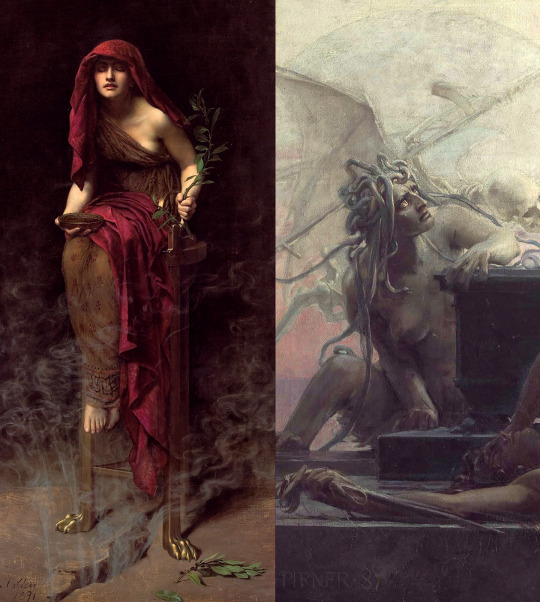
On the pillars before the Oracle of Delphi, the navel of the ancient world, an inscription carved read: “know thyself”.
Inside the Oracle’s inner sanctum sat the Pythia, bent over smoking fissures in the temple floor, breathing the sacred poison that would let Apollo in. It is a dreadful ecstasy– dangerous, body-wracking; gaining knowledge of the future shortens hers.
Far in the future, a man exiled to a gilded oubliette speculates his own worth and relevance to history, surrounded by ghosts, becoming a ghost himself. Alone with his doubt, he looks for the god in the machine, seeking answers: “Why do we fight? For what should I fight?”
But the god he built is silent.
The world of automated warfare becomes increasingly bleak and devoid of reason. He is terrified that the pilots who so inspired him will lose their purpose just as he has, and join him in miserable freefall.
Out of this wild abyss Treize builds the Epyon. Not for himself– he will never pilot it. There is almost nothing of Treize in this suit, not that we can recognize from its exterior. It is not the heroic Tallgeese with its Attic crest– it is something clawed, stygian, one of the bat-winged Erinyes with a torch and whip.
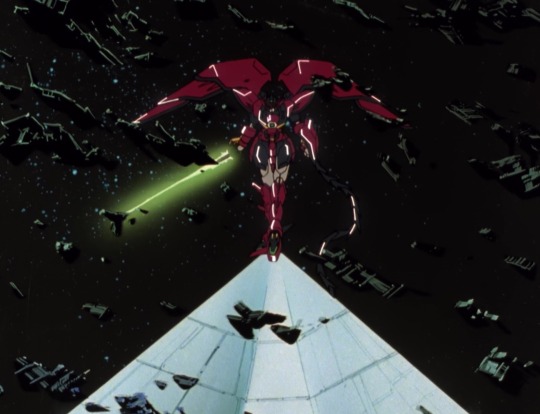
Epyon is not a weapon; it is a punishment. It is retribution for a world that has forgotten its humanity, its rites, its propriety. For its pilot, it is a scourge– the cracking whips of the Furies in their brain, driving them into a frenzy. Madness. Holy poison, to let the future in.
Its name, επυον, is meant to mean "Next", or “After”.
To guide the future, you must shorten yours.
You must not be a victor, when you pilot this suit.

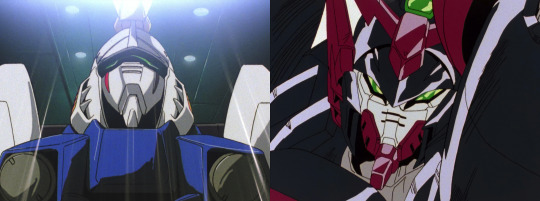
Where did Epyon come from, in the mind of its creator? Everything we see of Treize forms a cohesive aesthetic: Roses, swords, romanticized old-world decadence, heroic motifs, gold, blue, white, red. Where did this thorny, tyrian-purple chimera live in him? Shouldn’t we have seen it lurking somewhere? Or does it seem to come out of nowhere precisely because he designed it to be his antithesis?
Whether or not “Frozen Teardrop”, the novelized sequel to Gundam Wing, can be considered canon is a source of contention amongst many fans, but looking at it purely as a way to judge script-writer Katsuyuki Sumizawa’s intentions when he wrote the series, I find many parts of it to be informative.
To paraphrase the fan-translation, it states that Treize found blue and white to be emblematic of heroism, colors associated with victory, and so their complementary opposites, black and red, could be seen as the colors of the defeated, associated with loss. For Treize, defeat and loss are tied inexorably to his vision of the future: “it was the defeated who changed the era and began the next”, as it says in the novel.
Epyon is meant to negate the ideal of the conquering hero, the counter for a world beset by victorious cowards who command legions of dolls to do their killing and dying for them. As Treize designed it, Epyon has no projectile weapons; it is a suit purely for one-on-one combat, a suit that demands you risk everything when you fight.

No surprise then, that he gives it to the first Gundam pilot he meets– remarkably, the one whose self detonation caused everyone in his orbit to question their involvement in the war-- though one gets the feeling that any of the pilots would do. Treize hopes that Heero will use the Epyon to navigate the chaos to find the true purpose he is fighting for, and determine what course the future will take.
But Heero has never been concerned with this sort of navel-gazing, and has no interest in discovering whether or not battle itself has a grander purpose or ultimate meaning. He fights the enemy in front of him and will continue to do so until either his life, or the supply of enemies, runs out. Heero does not overthink the future; he does not dwell on consequences. Treize does nothing BUT overthink the future and consider the fractal spread of consequences. They are mutually incomprehensible to each other, but perhaps not at cross purposes.
Heero enters the cockpit convinced that he is expendable and redundant, that his only goal is to survive. When he returns from his test flight in Epyon, he can barely stand or speak. From that point on, he thinks about the future, about who and what will be important for what comes after the fighting has ended.
Eventually, the Epyon passes to the only person more disillusioned and estranged from his sense of purpose than Treize is– to Zechs, where it seems it was always meant to go.


• How And When Was Epyon Built?
Whew! Now that the metaphysical stuff is out of the way, let’s talk about the physical development of Epyon, and how that must have come about.
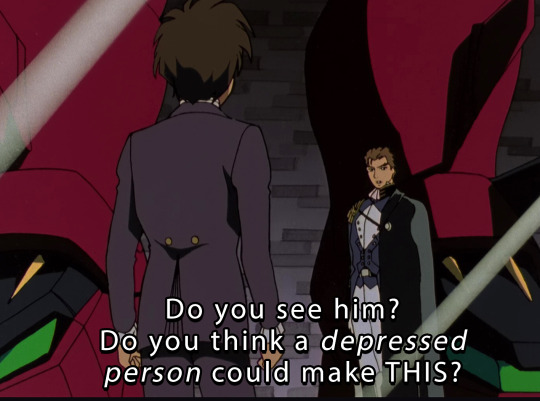
As we know, after his confinement by Romefeller, Treize, lurking around with the lights out and questioning his place in the universe, uses his now copious free time to build this gundanium dominatrix using only his laptop and the power of depression.
Now, even if we are to accept that Treize is a programming and engineering savant on top of all his other accomplishments, it would still be beyond even His Excellency’s considerable talents to pull an entire Gundam out of a hat in the basement of an abandoned Disney castle.
Where did he get the gundanium? The crew? The construction equipment? Isn’t he under house arrest? Why would Romefeller leave him unsupervised to build a demon robot that predicts the future?
These questions have been annoying the fandom since 1995. But, if you look carefully (VERY carefully, one might even say obsessively), it's possible to find the connective threads that make Epyon’s construction less of a magic trick.
--Let’s go through the list of these unclarified canonical whoopsie-daisies in order of most to least glaring!:

If Treize is being kept in confinement in the Romefeller headquarters, why is he allowed to design and build a mobile suit?
*:・゚✧ Our princess is in another castle! *:・゚✧

The mansion that Treize goes into during episode 27 is NOT the castle that we see him in during episode 34. This switcheroo would probably have happened sometime in the MIDDLE of episode 27– which I guess might as well be the case, since episode 27 is a dreamlike, nonlinear stroll through Treize’s spiraling existential crisis.
Between Treize being confined in the Romefeller headquarters and developing the Epyon, Treize is in fact liberated by the Treize Faction and moved to the blue-roofed castle in the middle of the forest near the Luxembourg Base, which is where the faction has made their headquarters.
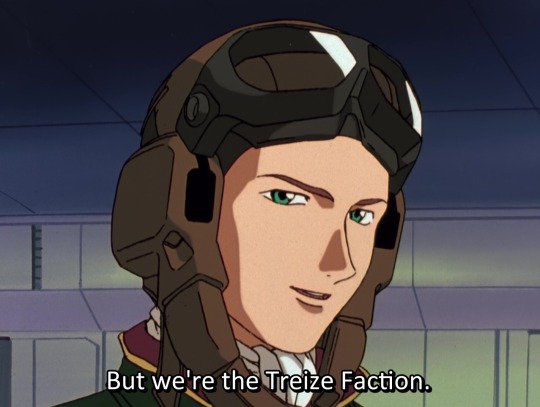
Presumably the crew and equipment needed to actually manufacture a new mobile suit were available at the base.
Treize’s confinement at this point is largely self-imposed; he could rally the factions loyal to him and make a move on Romefeller (as he does later), but he doesn’t believe he has the ability or the right to do so. Instead, he builds Epyon, and just kind of winds it up and lets it loose on the world to see if anything interesting happens.
And it does! The interesting very much happens.
Where did Treize get the gundanium alloy to build a Gundam?
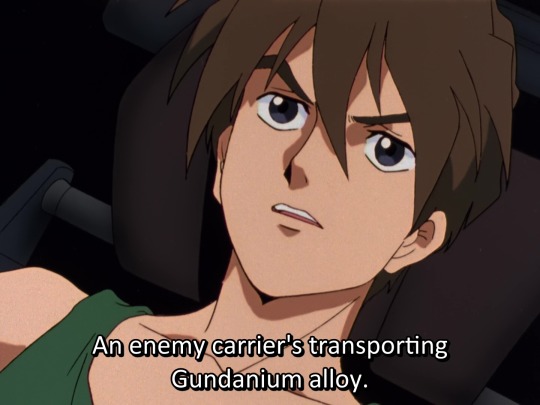
The shipment of gundanium that Heero destroys in episode 4 was being transported on an OZ carrier, and it had to have been going somewhere. This gundanium was ordered WAY before Zechs’s gundam rebuilding project, so its purpose is left unidentified– someone in OZ clearly wanted to experiment with this new material for developing mobile suits.
Adding to that, the gundanium that Zechs had access to when he was rebuilding the Wing Gundam had to come from somewhere, and that somewhere was probably the very deep pockets of a guy who likes to keep his best friends happy.
Regardless if any given shipment of gundanium made it home in one piece, what it means is that OZ has a way of obtaining gundanium, and if OZ has it, then Treize has it.
How would Treize know how to build a Gundam?
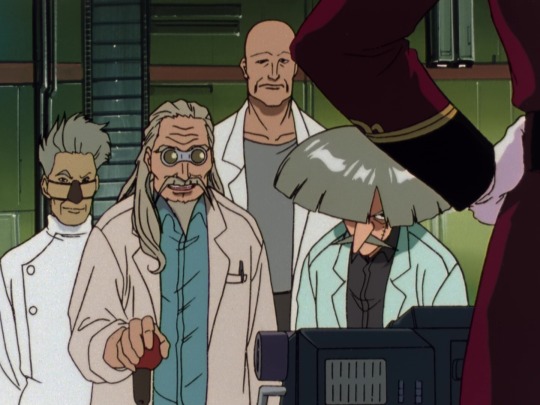
During the process of rebuilding the Wing Gundam from the ground up, Zechs and his engineers would probably have kept extensive records and made new Gundam blueprints that Treize would know about. Also by this point in the series, several Gundams and their pilots have been captured, and the Gundam’s engineers forced to build Vayeate and Mercurius for Lady Une. OZ would therefore have all the data they need to build a fresh Gundam, and once again: if OZ has it, then Treize has it.
Okay, but how would Treize know enough about the ZERO system to be able to reverse engineer it?

As mentioned in the entry about the ZERO system, the AI of the Taurus mobile suits eventually becomes the Mobile Doll AI. This is a predictive battle algorithm OZ already had in the works long before the Wing ZERO was discovered.
Additionally, Treize is likely to have had access to the data being recorded by Trant while his team was researching the ZERO system, even if he was getting it covertly via a Treize Faction infiltrator, or a member of OZ who was still loyal to him.
How does Treize know so much about designing mobile suits and their cockpit systems?
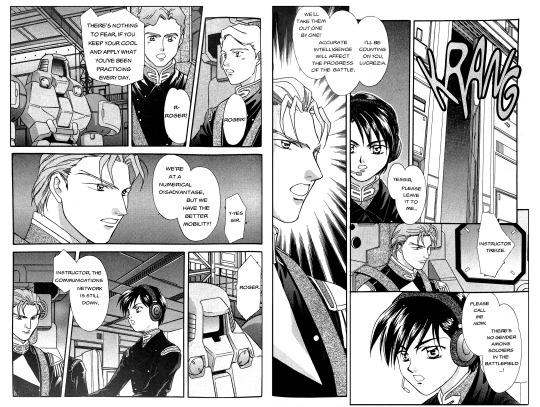
One has to remember that Treize was the instructor at Lake Victoria Base (the same position Noin holds when we first meet her in the series), responsible for training OZ’s elite pilots, and (according to “Frozen Teardrop”) involved with crucial tactical developments and improvements to OZ’s lineup.
Yes, he’s a fancy-pants aristocrat, but you can’t say he doesn’t know his way around a mobile suit. He’s best friends with Zechs, after all– nerds of a feather flock together.
But how would he know to program the security system to accept Heero Yuy?
Well, ever since he was captured and hospitalized Heero’s biometric data would have been on file with the Alliance military, and therefore available to OZ, and therefore (again) available to Treize– so by now His Excellency will have certainly been made aware that Heero’s bones run on a third-party Adobe Photoshop plug-in.

But who cares about that crusty old data? All of the Gundam pilots have been accounted for and fingerprinted and scanned and microchipped up in Fortress Barge! They could probably 3D print Heero Yuy out of PLA and sell action figures if they wanted.
As to why Treize picked Heero specifically, I have two theories:
The first is that he simply programmed the computer to accept any and all Gundam pilots that might want to drop in for tea and assassination (and probably Zechs too, just in case he was in town).
The second is that Dorothy’s presence in the Sanc Kingdom means that Treize has a little bird keeping him informed about everything happening there, including that both Heero and Quatre are attending the Peacecraft’s School for Wayward Radical Pacifists.
True, Dorothy is technically there to be her grandfather Duke Dremail’s little bird informant, but Dorothy’s loyalties are her own, and she very much likes and respects her cousin Treize. She’s probably beaming news of the Gundam pilots directly to him on their shared eyebrow-frequency the whole time she’s there.
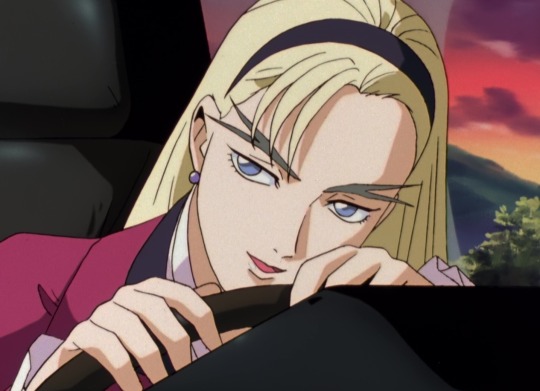
Eyebrow-to-eyebrow communication.

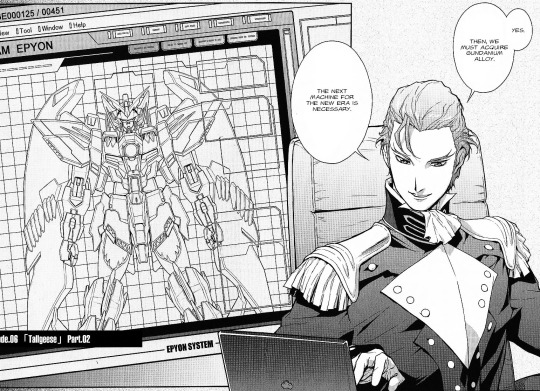
As one final note– I’m aware that the more recent manga adaptation, “Glory of Losers”, contains its own version of events that attempts to reconcile the building of Epyon with other events in the series. However, while I appreciate that they made an attempt to resolve the big, lingering Epyon Questions, I find that like most of their retconned material involving Treize, I…
I don’t like it.
Or to put it less personally, I think it creates an even more dubious timeline of events that is somehow less credible than the original. In this version, Treize begins the planning and construction of both Epyon and Tallgeese at the beginning of the series, before the original Tallgeese has even been brought into play and LONG before the ZERO system is introduced– somehow with the foreknowledge that these suits will be vital for the development of the new era.
I think this is a contrived way of making Treize into an omniscient puppet master who was retroactively steering everything in the correct direction from the very beginning, and was therefore always right and always assured of his role in the future– and I think that does his character an incredible disservice. In a story about the deep significance of changing people’s hearts and minds, the fact that Treize is retroactively scrubbed of his flaws and morally questionable decisions runs counter to the central thesis of Gundam Wing, and what has made it such a memorable story.
“Glory of Losers” is a beautiful manga and I do think it does an incredible job of presenting the rather garbled narrative of the series in a new light, with some truly masterful tweaks that add depth to the characters and story. But it’s also guilty of some egregious changes to canon that serve no purpose other than to reconcile the main series with the events of “Frozen Teardrop”, and as an excuse to redesign all the mobile suits to be cooler and sell more model kits.
…On the other hand, in this version of the story, Treize was already familiar with Tallgeese from his earliest days in OZ.
This is obviously another very unnecessary and suspiciously convenient retcon that I feel is in dubious taste– HOWEVER: it does mean that Howard gets to meet young whippersnapper Treize Khushrenada, who just so happened to be the one to ask him to paint it white because he thinks one day he’d like to pilot a Big Damn Hero Machine himself, and he wants it to be a more "elegant color."
And that is the funniest shit I can possibly imagine. So I’ll give it that.
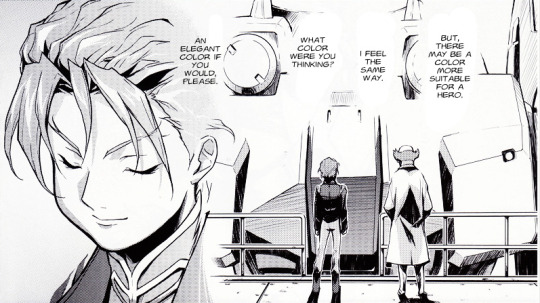

I'd like it to be at least 20% more elegant
#Epyon#Gundam#gundam wing#treize khushrenada#parsing post#wing watcher's toolkit#tinyozlion pgw#Heero Yuy#Zechs Merquise#HOWARD
84 notes
·
View notes
Text
“Heero Yuy has no personality” he’s basically a child Winter Soldier, were you expecting another Amuro? Heero starts the show clearly extremely traumatized. His number one instinct is “if you fail the mission, or if the mission is completed, self-destruct.” It’s a miracle he survives as long as he does, because he has no reason to live outside the mission, no personal goals. All he has is the order he’s been given. He laughs like someone who has nothing to fear because he isn’t concerned about living or dying.
The iconic birthday party invitation scene isn’t him hating Relena, it’s a warning. He is a weapon, all he knows how to do is kill. If he wants a person to live, the best thing they can do is stay far away from him.
Over the show’s two seasons, Heero learns how to be a person again. Working with the other Gundam pilots forces him to consider his effects on the team, thus on others in general. All he knows how to do is fight, but over time he shifts from fighting just to carry out orders to fighting to protect someone. He protects Relena, the other pilots, the colonies, the Sanc kingdom. When the Wing Zero system takes over and turns him back into a mindless killing machine, he wrests control back and learns to use it, not let it use him. He is horrified at the prospect of becoming nothing more than another weapon in someone else’s hands. He rejects the Epyon for this same reason, he is not willing to give himself over to the machine at the cost of his humanity.
He comes back out of his shell slowly. He builds tenuous friendships with the rest of the pilots, and forms an alliance with Noin. He clearly enjoys petting the dogs, even if those dogs are guard animals from Oz’s military. His words to Relena before the final match mirror Howl’s words to Sophie, “I’ve finally found something I want to protect—you.” Heero has found a cause worth fighting for. His feelings for Relena are filtered through layers upon layers of training and conditioning to turn him into the perfect soldier, but his love for her shines even if he lacks the words to convey it. He smiles at her, and he is genuinely happy. He wants to live, is determined to live in the face of seemingly impossible odds. This is Heero Yuy the boy, not Heero Yuy the Gundam pilot.
TL;DR: Heero Yuy has a personality, he’s just burying his emotions because he’s been so busy being a soldier he has to relearn how to be a person.
#gundam wing#heero yuy#not really vagueposting about anyone#I just have a lot of thoughts on him as a character#he’s such a good character#tw suicidal ideation#(just to be safe)
22 notes
·
View notes
Text
On G-Witch and the "Giant Space Laser"
Seeing a bunch of new fans who's first experience with Gundam has been Witch from Mercury be either confused or even angry at the big laser:

So I thought I'd take some time to explain the history of Space Lasers and Gundam and how every long time fan has basically had it on our bingo card since the show started. Note: I'm not including Victory's Keilas Guilie or G-Gundam's Statue of Liberty Cannon.
The first one was called the Solar Ray and it appeared in the original Mobile Suit Gundam in 1979, it was a converted colony from Side 3, and used by the Principality of Zeon during the One Year War:

The second one appeared in 1985's Mobile Suit Zeta Gundam as the Colony Laser and it was called Gryps 2, it was created out of the husk of the colony of Side 7 and used by the Titan's during the Gryps War:

The next time we'd see one was in 1996's After War Gundam X, an AU timeline which was almost a "What If?" universe of the original Universal Century timeline that asked the question "What if Char had succeeded during the counter attack?". The colony laser in question was created out of one the abandoned colonies left over during the 7th Space War. It also had one of the coolest destruction scenes in a show IMHO:

2002's Mobile Suit Gundam SEED has not one, not two, but three different stand-in's for the old Colony Laser in the form of the the "Cyclops System", which was a powerful targeted array of microwave satellite weapons that vaporized all water it was pointed at, this included inside of human bodies. The effects in the show were graphic.

The second from SEED was GENEIS or Gamma Emission by Nuclear Explosion Stimulate Inducing System, which was essentially a huge gamma ray cannon that used nuclear explosions as the fuel to generate the gamma ray bullets. Just like before the results of it firing are VERY GRAPHIC.

Moving on to the third from SEED we have Requiem, which was a large cannon installed on the dark side of the Moon and used reflecting relay stations positioned around the Earth to hit targets with pin-point accuracy:
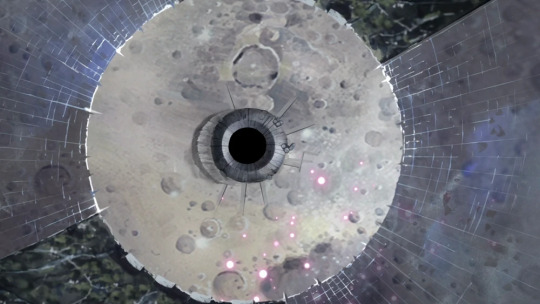
Leaving SEED behind finally we move on to 2007's Gundam 00 and their Memento Mori system, which in a departure from previous superweapons in Gundam was mounted to the Earth's orbital ring and used by the Earth Sphere Federation organization A-Laws to destroy basically the entire Middle East. Silly fact: because it was mounted to a ring the first one had a conical field of fire which gave it a blind spot that they could sneak up on.

Circling back to the Universal Century we have 2010's Gundam Unicorn trotting out Gryps 2 again, and in a scene that Witch From Mercury directly pays tribute to: a character face tanking the blast to save their friends and family:
youtube
And now we're at today and Witch From Mercury has used the reference wonderfully.
I hope this explains a little bit of the history of these things and how they fit into the Gundam Franchise and how they don't come as a shock or surprise to the long time fans. Rather if anything it's like seeing an old friend back in the mix.
#mobile suit gundam#gundam#mobile suit gundam the witch from mercury#g-witch#gwitch#g witch#gundam the witch from mercury#gundam witch from mercury#universal century#after war gundam x#mobile suit gundam seed#mobile suit gundam 00#mobile suit gundam unicorn#long post#gundam history#Youtube
181 notes
·
View notes
Note
Re: John being demi - don’t you think it’s possible he had sex because that’s what was expected of him? His age, lifestyle, etc. Especially because of his self-destructive tendencies and not always acting on how he truly feels. Or acting in a way that doesn’t express how he truly feels - i.e. Barcelona. He could have easily slept with Yoko early on, with her throwing herself at him but it wasn’t until correspondence and a deeper connection did he engage sexually. Not to mention him not wanting to have sex with men later in life because he couldn’t find one he connected with in that way. To me even the lyric “My love will turn you on” - is revealing.
If you want to interpret John Lennon as demisexual then you certainly can and I can't and won't stop you. But since you're asking me directly my answer is just a flat "no." John was sexually attracted to women so he slept with them. He was conventional that way. He was also hooking up with Yoko soon after Indica, he did not wait until the night he took LSD with her and recorded the sex tape.
You need to remember the cultural climate John existed in. It was "expected" of John to get married to a woman, settle down with her, have children, hold a steady uninspiring job, and then die at 70 with a gold pocket watch in his waistcoat without ever standing out from the crowd or doing anything that would express his individuality and personal needs. These were the stultifying expectations John grew up under and he hated it.
The Beatles kept their orgies secret because it would have destroyed them as a band if it got out that they were nailing groupies, this is the exact OPPOSITE of it being "expected" of them to have sex with lots of women.
The performative aspect was the groupies expectation of John to act like Beatle John while he was thrusting. That doesn't mean John disliked it or was carrying out an act he found distasteful for the sake of expectations. And remember: John kept posters of Bridget Bardot and Elvis Presley in his bedroom at Mendips because he was jerkin' it to their images. He only had a parasocial fanboy relationship with them but he was deeply sexually attracted to both. This is the opposite of demisexuality which requires a personal connection of some kind.
I talked about this in the McLennon server this afternoon so I'll just repost what I said in there:
Leggy「IT'S A GUNDAM 」 — Today at 5:20 PM john was just so laden with PTSD and agoraphobia
like Shotton talks about how John started turtling up once he got Kenwood, the hibernation years were a long time coming. but he was so deeply separated from other people even as a child and that just got worse and worse over time.
like sex was a way for John to connect with human beings and I wonder if it was the only way he could. that's not to say he couldn't fall in love if he met people but he had to keep his connections shallow as a matter of survival, he wasn't able to form those relationships easily and when he did connect to others it was because they pursued him.
Cynthia was the aggressor in her relationship with John, he liked her but he didn't pay attention to her until she dyed her hair blonde to catch his eye. Paul was super down bad. Yoko stalked him.
Otherwise even as a teenager John's relationships were strictly about sex, not romantic love, and he wasn't interested in romantic love until Paul and art school came into his life.
***
This is the exact opposite of demisexuality. John could form personal relationships and he could fall in love with people but when he did, he seemed to back away from them sexually. If we count Paul as one of John's lovers (and I do) then we see this happen to where John broke it off with Paul to pursue someone else physically (in this case Yoko.) John liked using sex as a way to connect with others but the moment genuine feelings got involved he got skittish. Note that he initially was planning to buy a house with May Pang but then he went back to Yoko when the Montauk plans began solidifying. John was certainly attracted to May Pang and he certainly had a personal connection with her but when that started getting a little too real and too deep, then he left her and would only hook up with her occasionally in controlled environments where he could ghost her easily afterwards.
The same thing happened with Yoko: after Sean was born, she and John stopped having sex and she sent him to the massage parlors to avoid dealing with him.
And don't forget how John's relationship with May Pang started: Yoko hired May Pang to be John's mistress. May was paid by Yoko to have sex with John and to keep him within Yoko's reach while they were in Los Angeles, what with Yoko's daily phone calls. May did fall in love with John but John knew that May was a business asset controlled by his wife and that she was being paid to never leave him. This was the foundation of their affection for each other. When May and John went back to New York and started looking for houses in Montauk, John opted to go back to Yoko for her smoking cure and came back ready to leave May Pang, aka the relationship with May Pang was becoming too real and too deeply rooted in actual Love (with that capital L) that meant May would no longer be forced to stay with John due to receiving a salary from Yoko Ono.
What seems to be more of a pattern in his life is that he was very wary of forming personal connections with others, when they did form it was because the second person pursued him vigorously, and then he had a saddening tendency to leave once his love with that second person began to develop into a deep, long lasting adult relationship. If anything, John seemed to use sex as a way to keep himself hidden and to stop forming connections with others because the moment he had sex with someone he could safely label them "disposable" which is exactly what he did with Paul and May despite his intense connections with both of them and the fact that he was sexually intimate with both of them.
John seemed to fear love and the responsibilities and ecstasies that it brings. This is not demisexuality as I understand it and I simply cannot agree with the assertion that John was demisexual.
#there is a McLennon aspect to all this but that would require an entire post of its own#john lennon#yoko ono#may pang#the beatles#beatles meta#my meta
53 notes
·
View notes